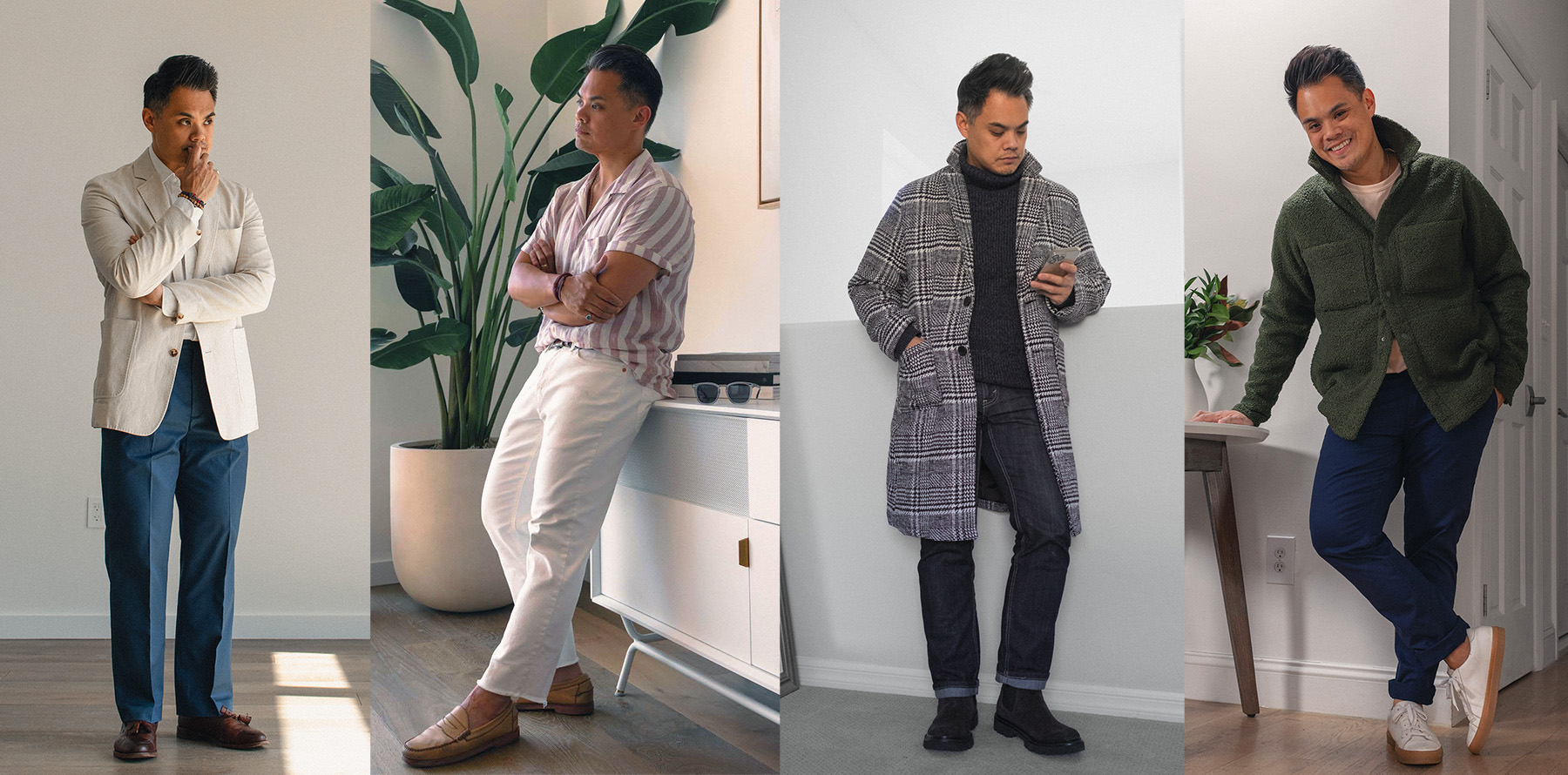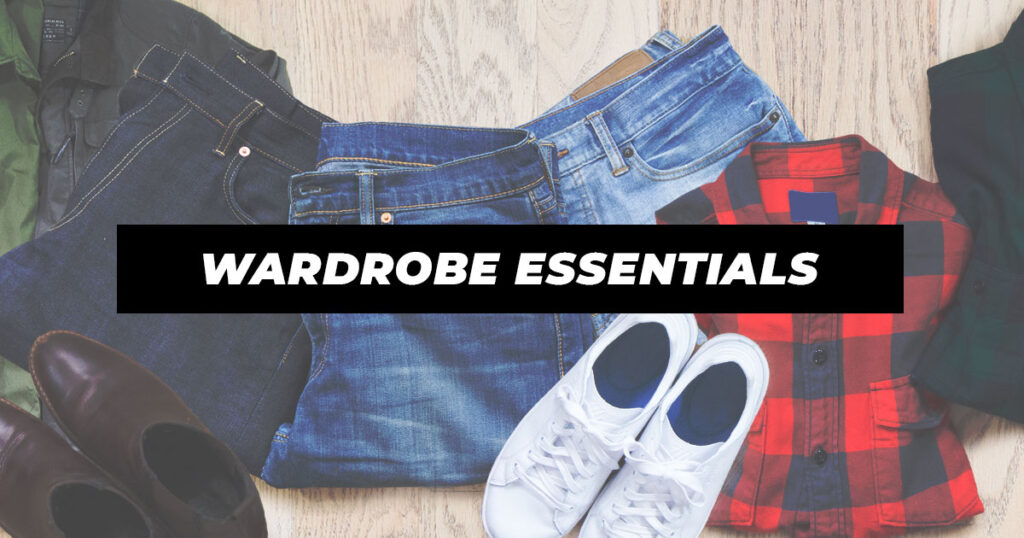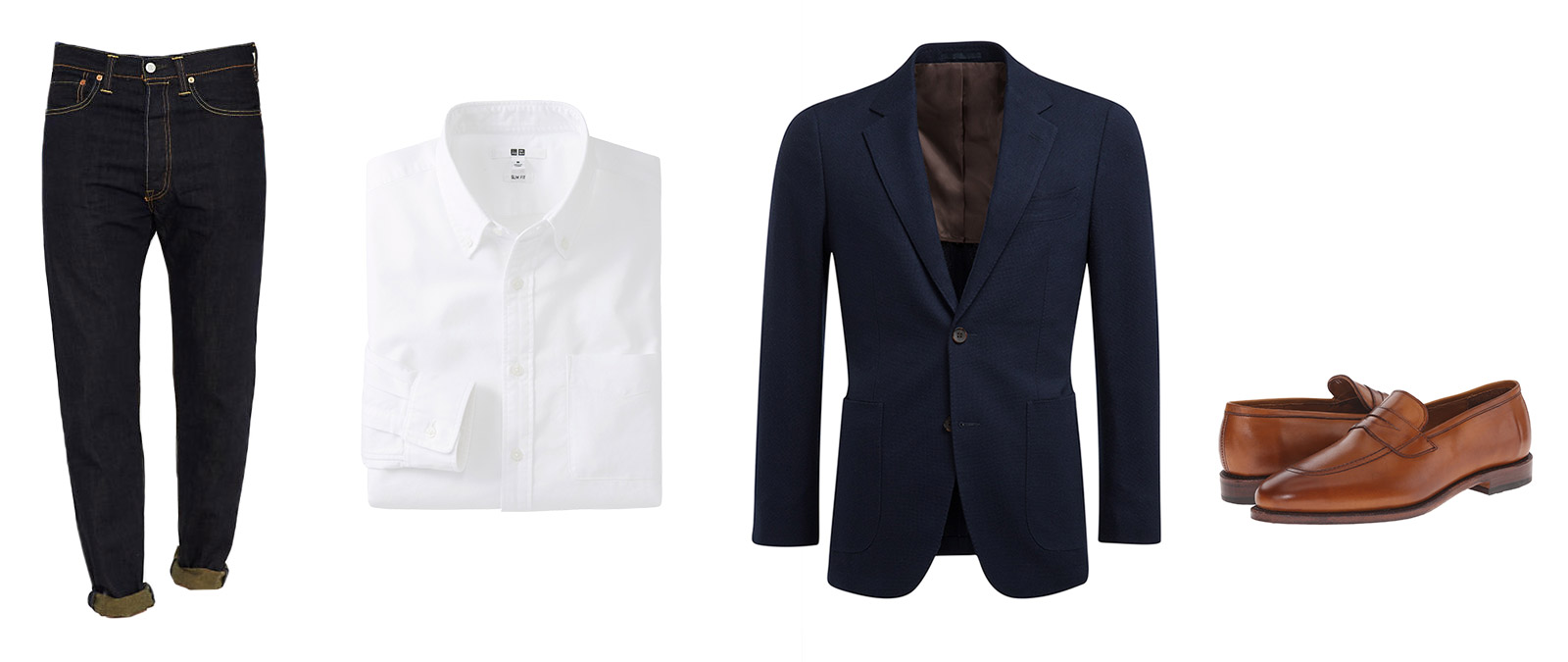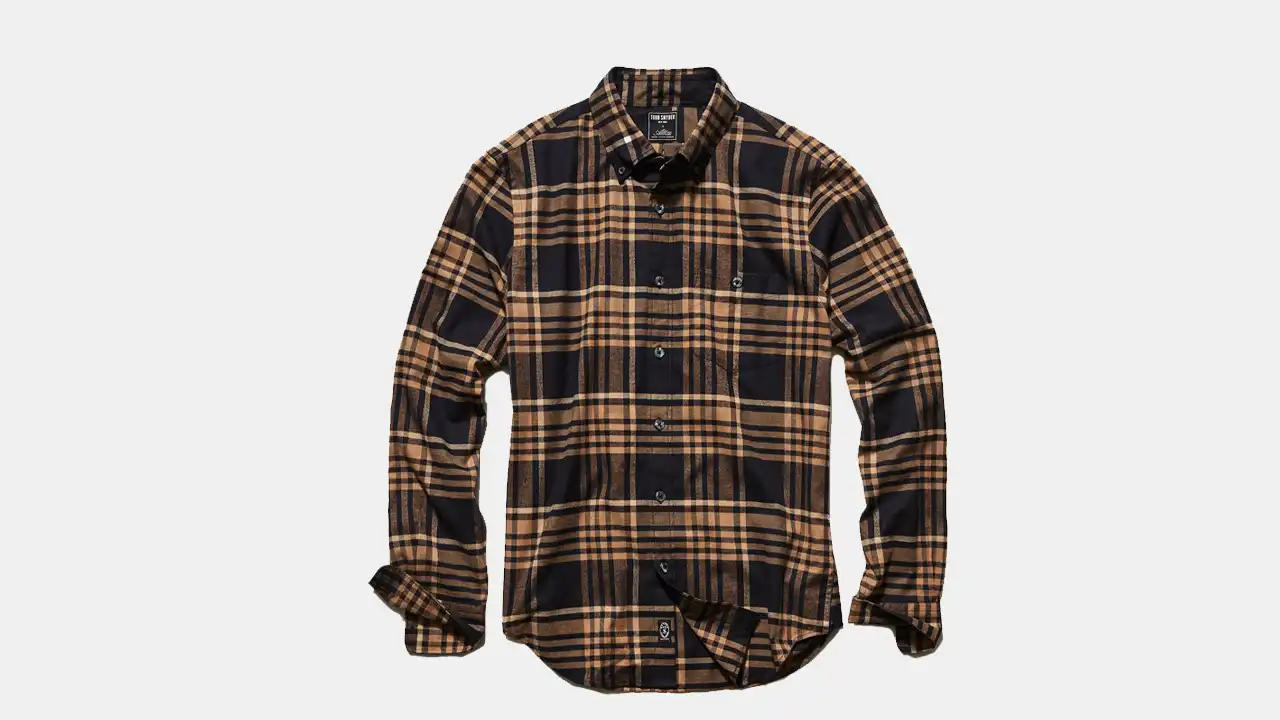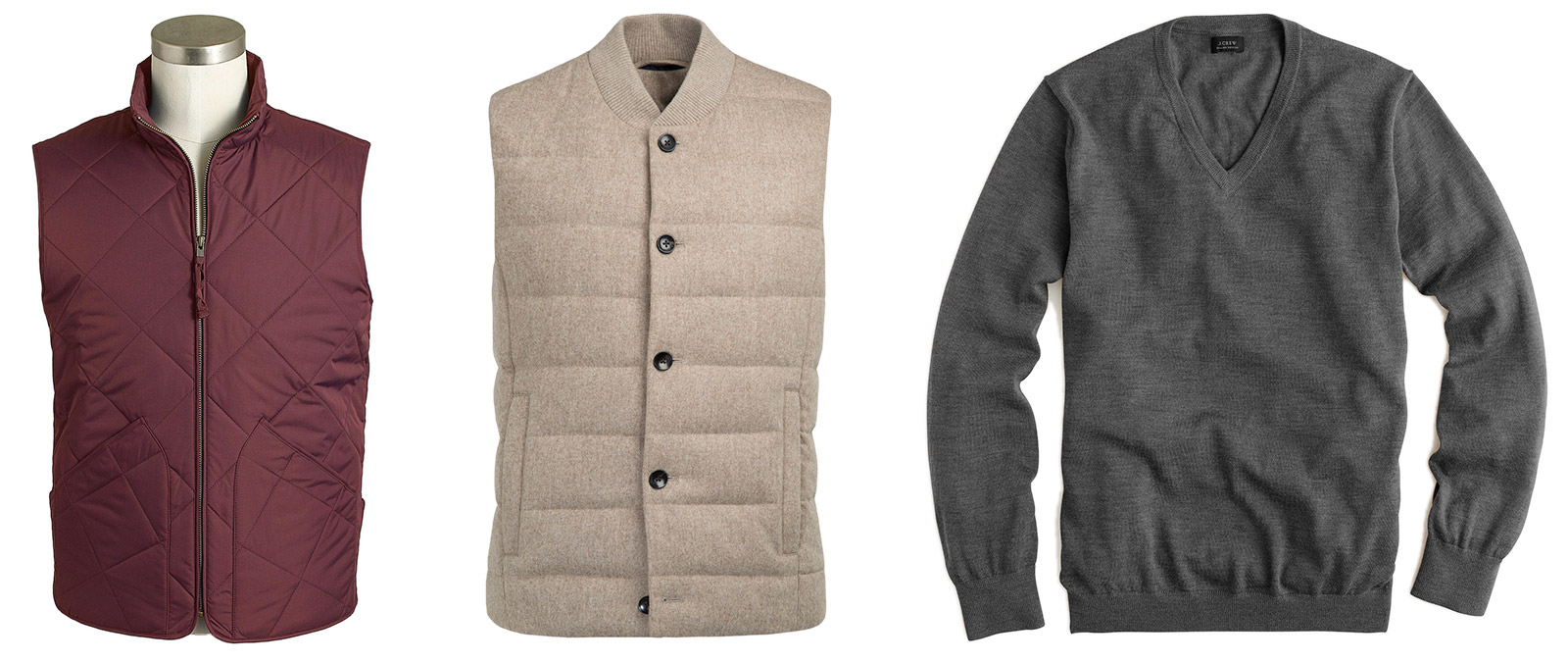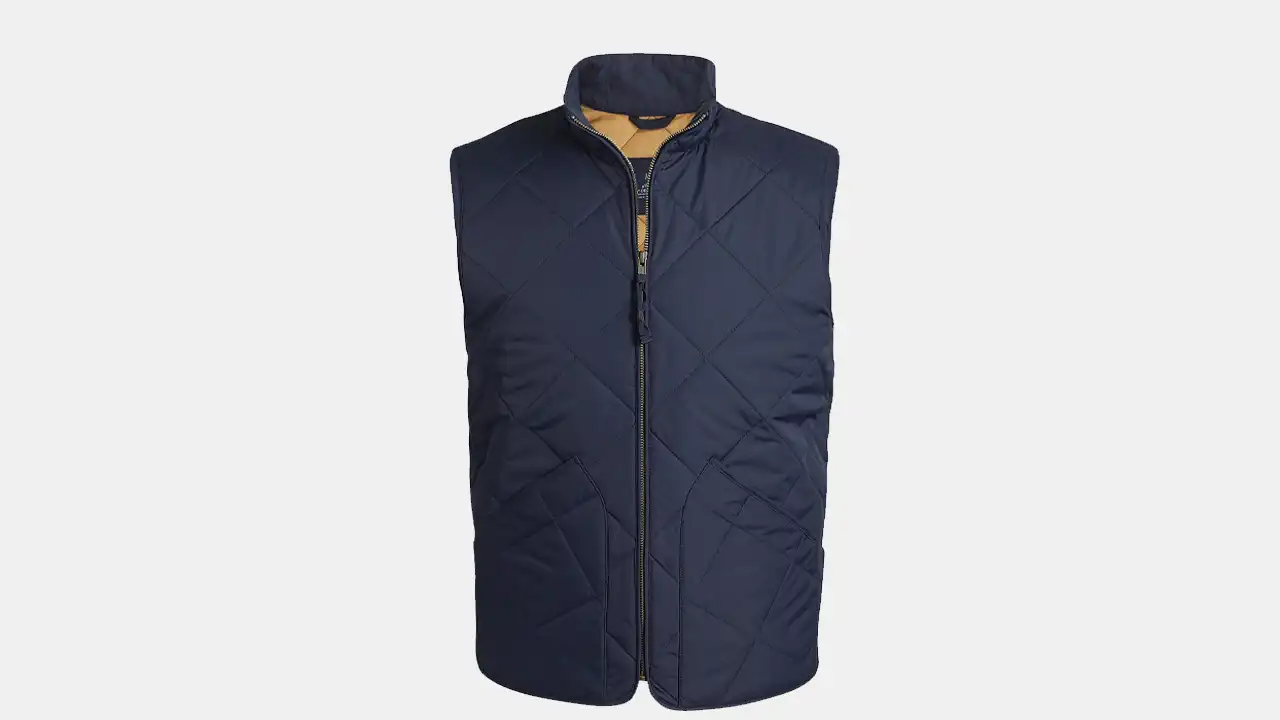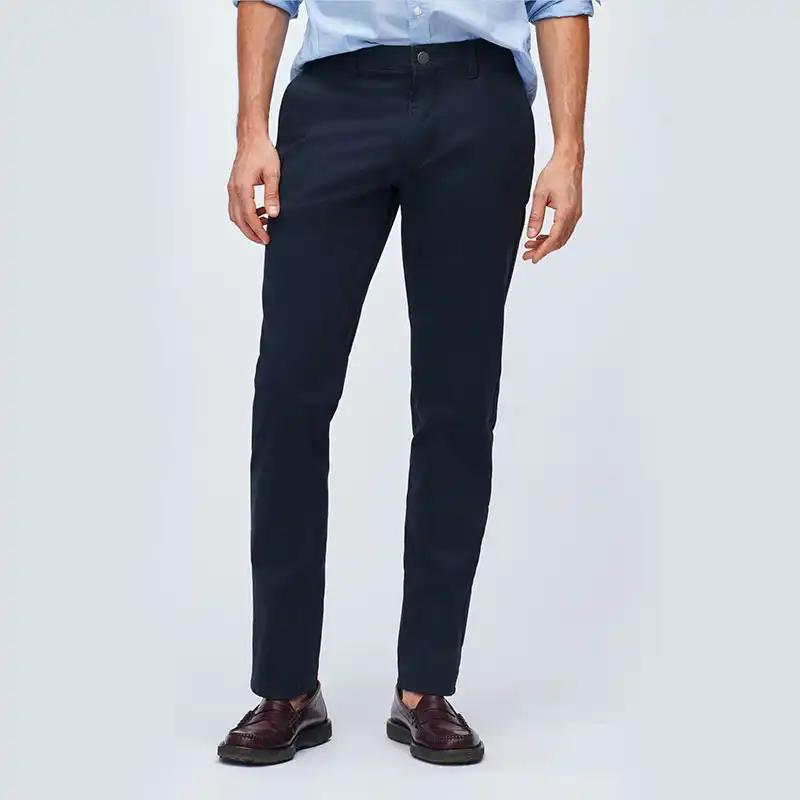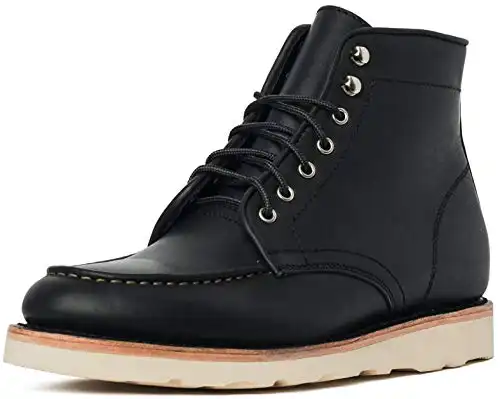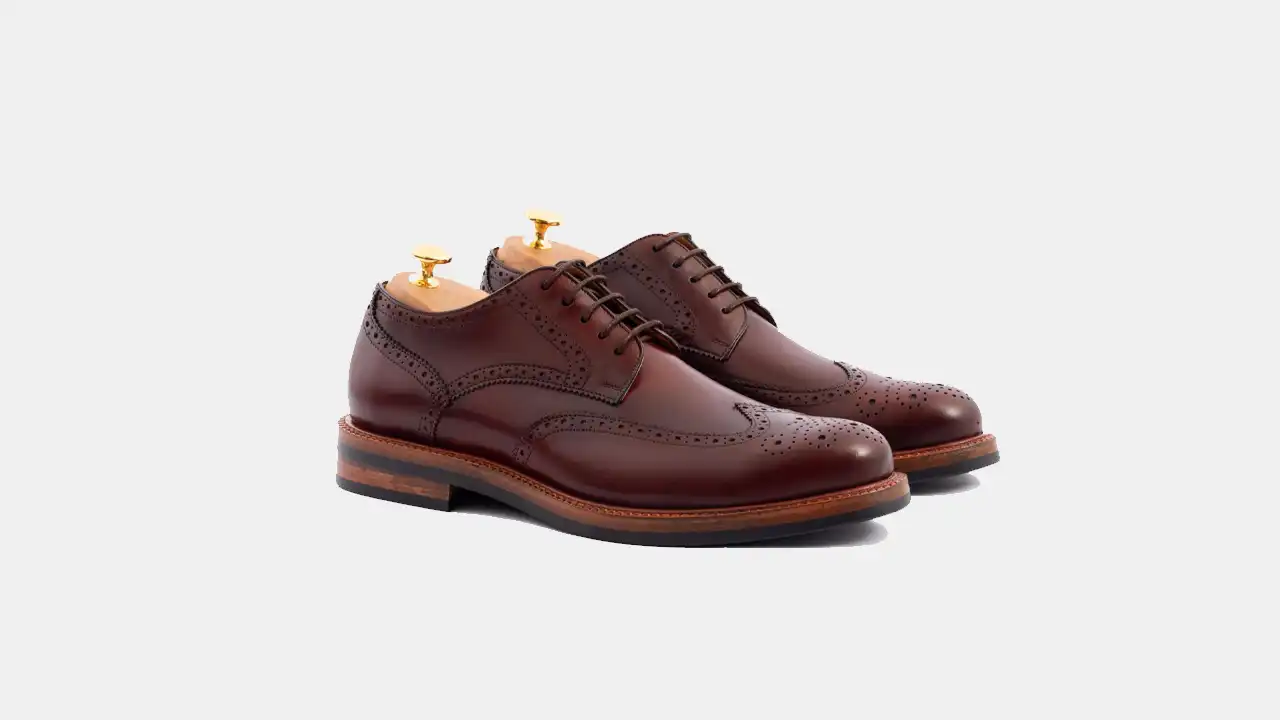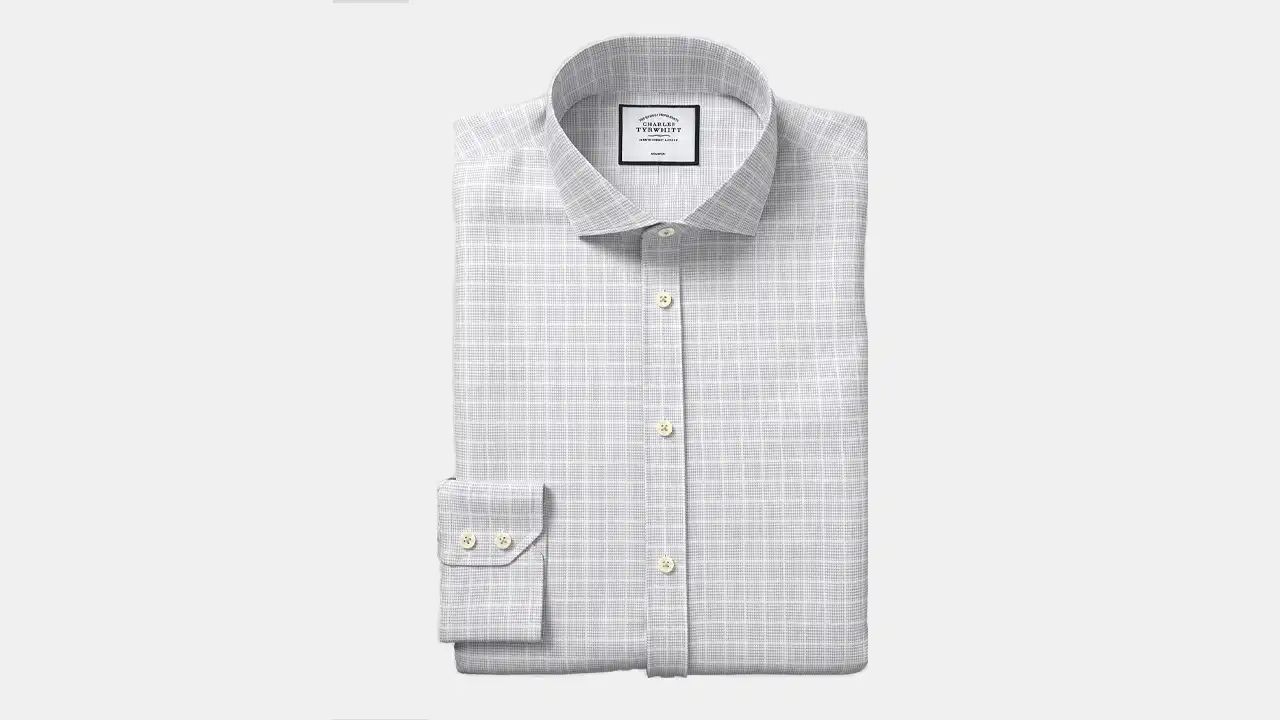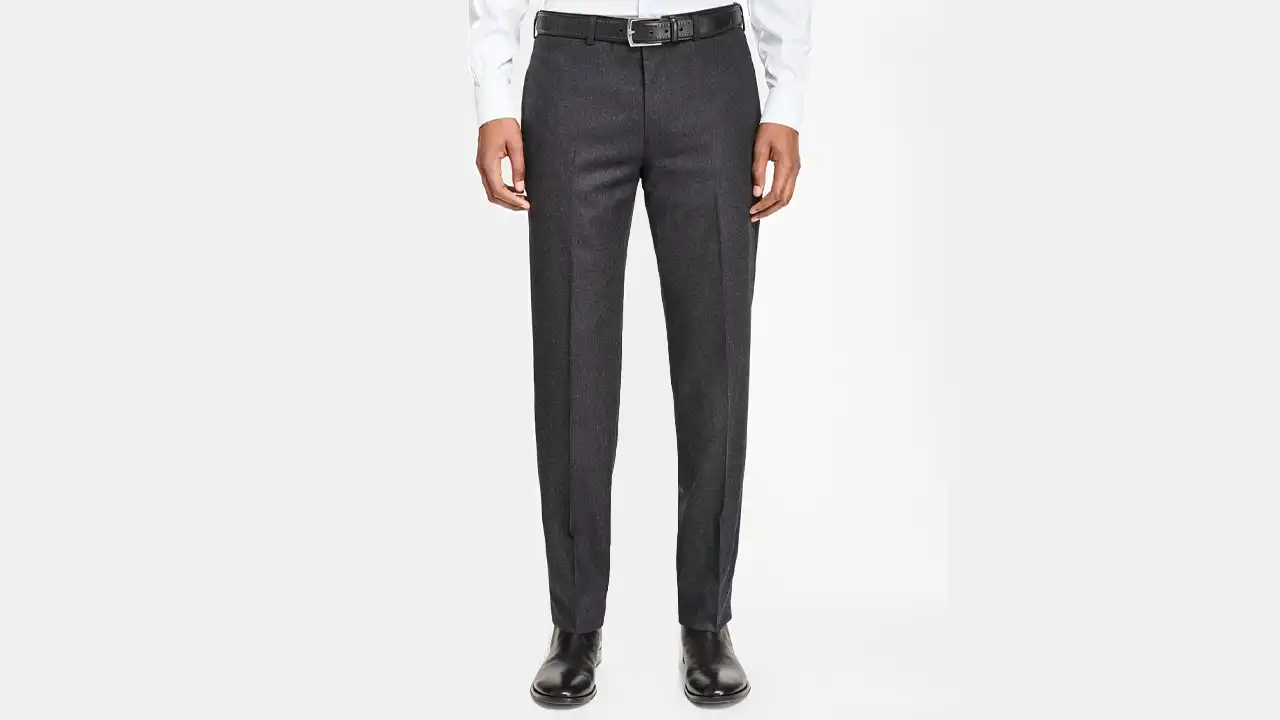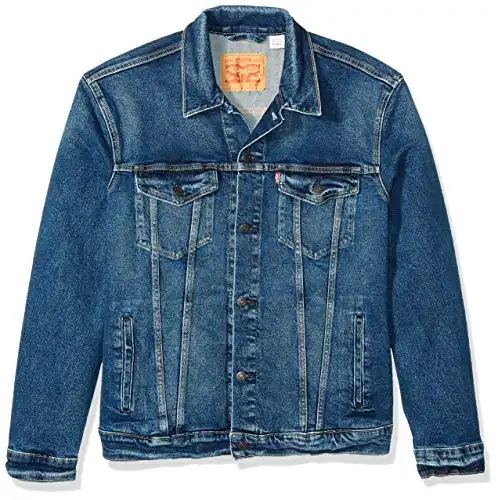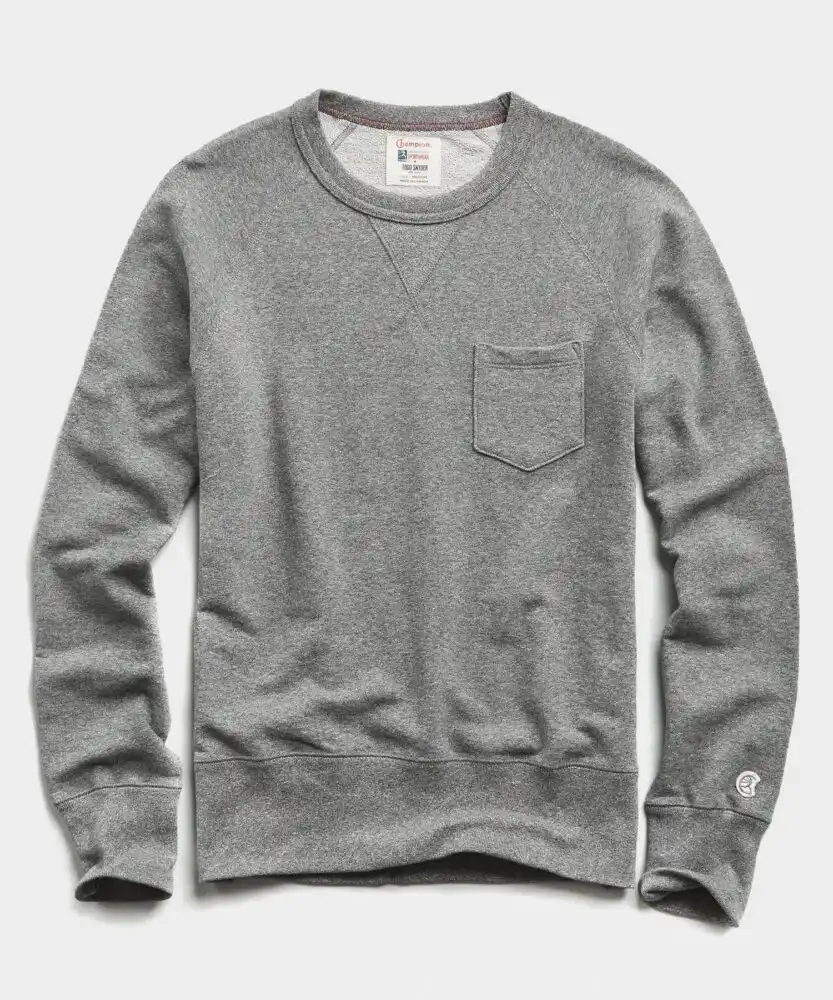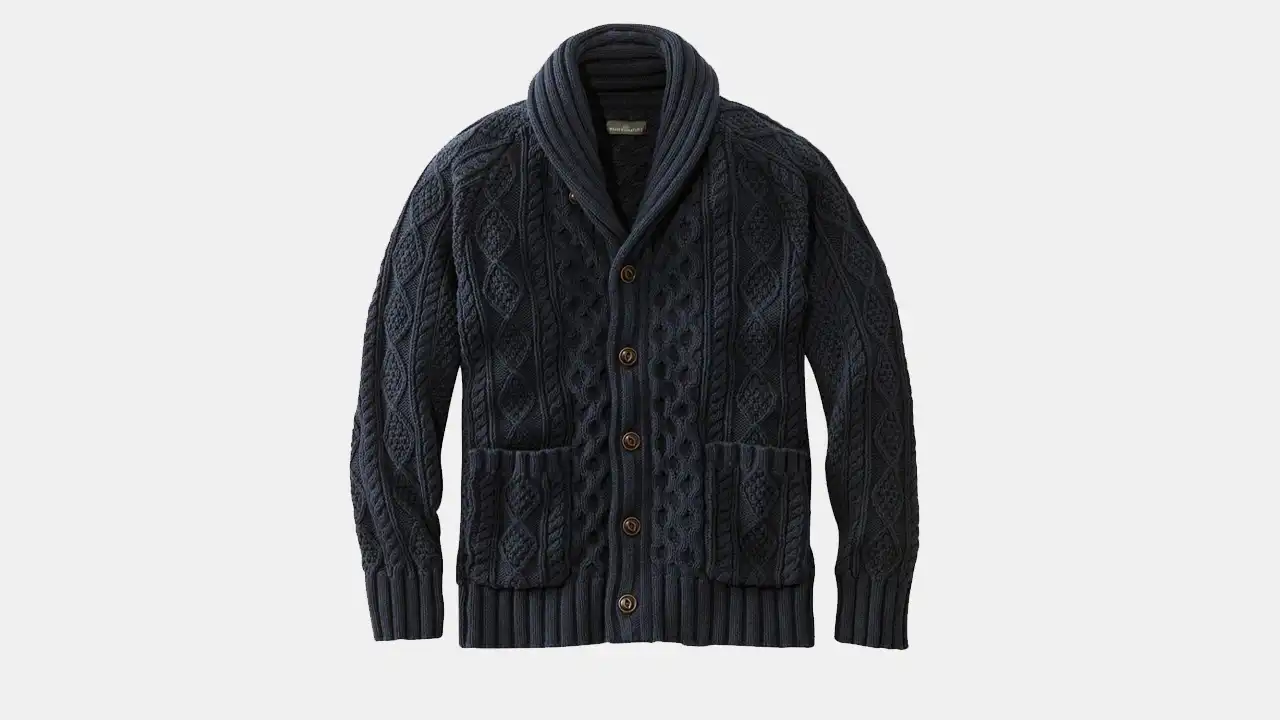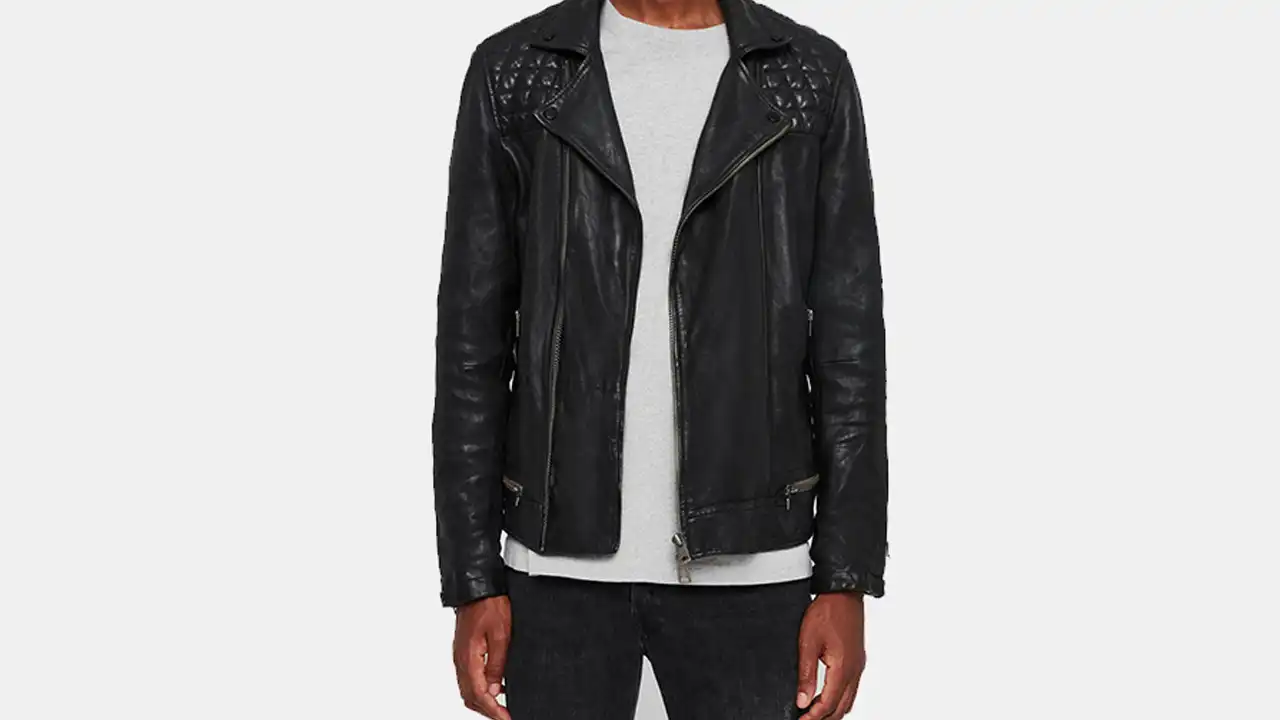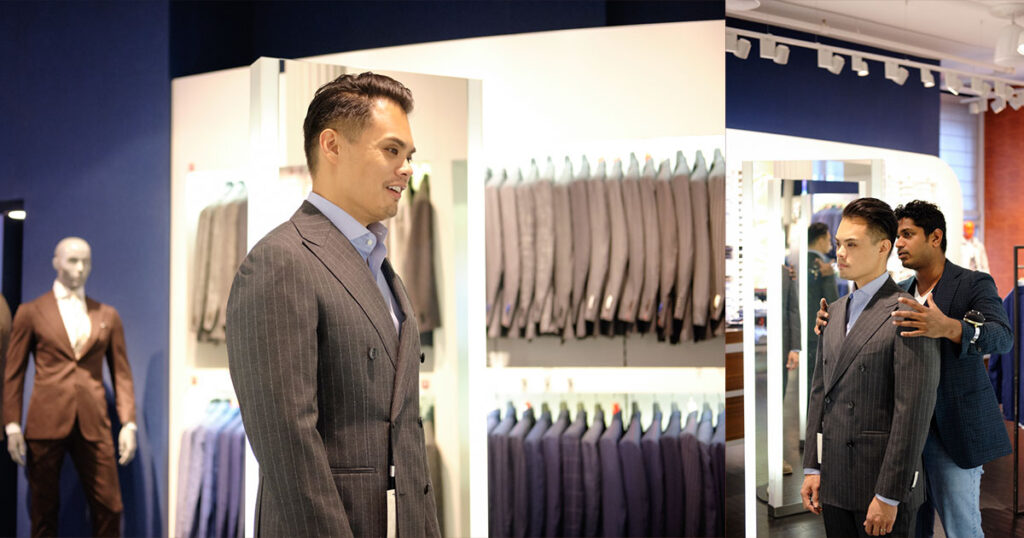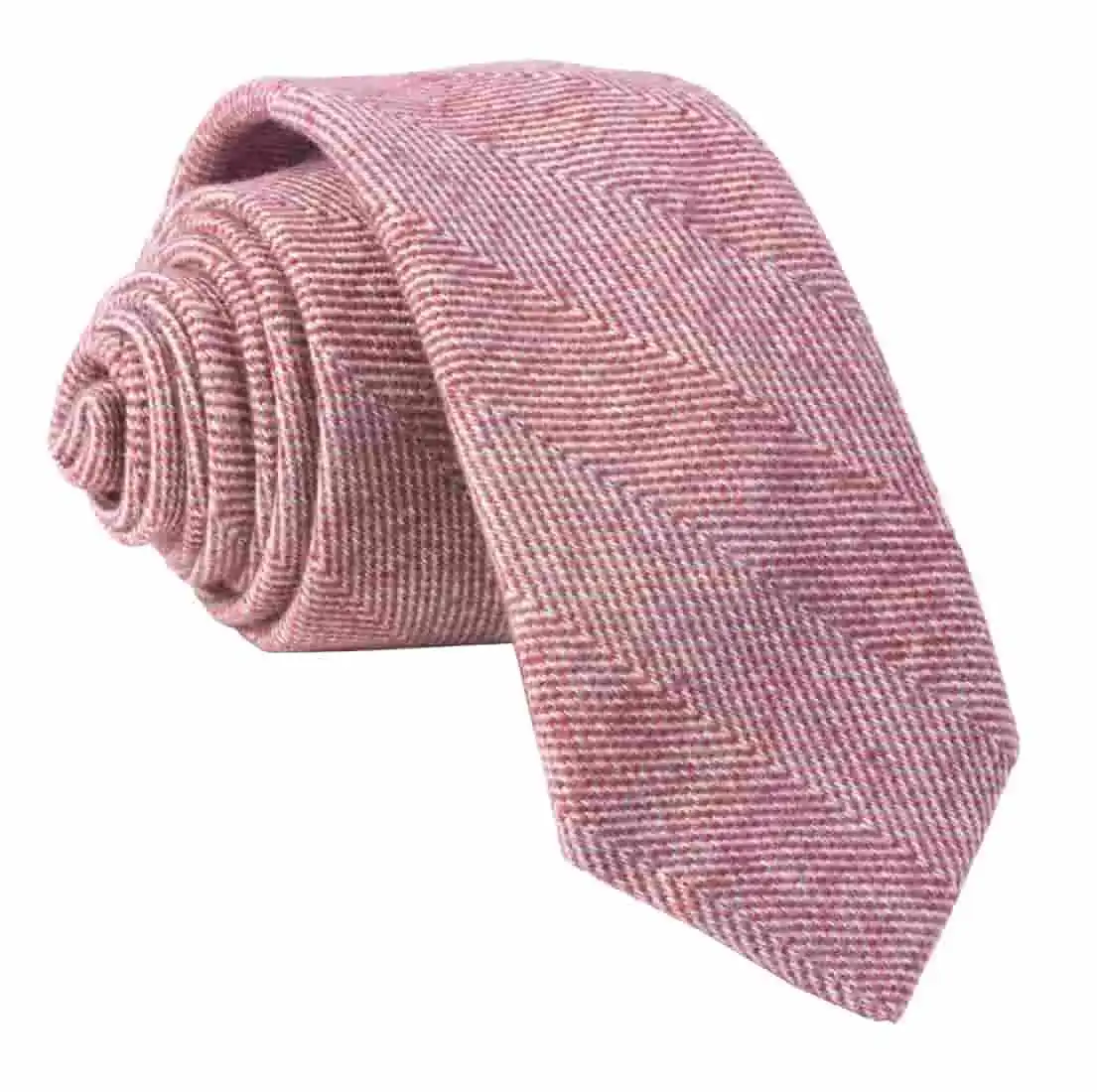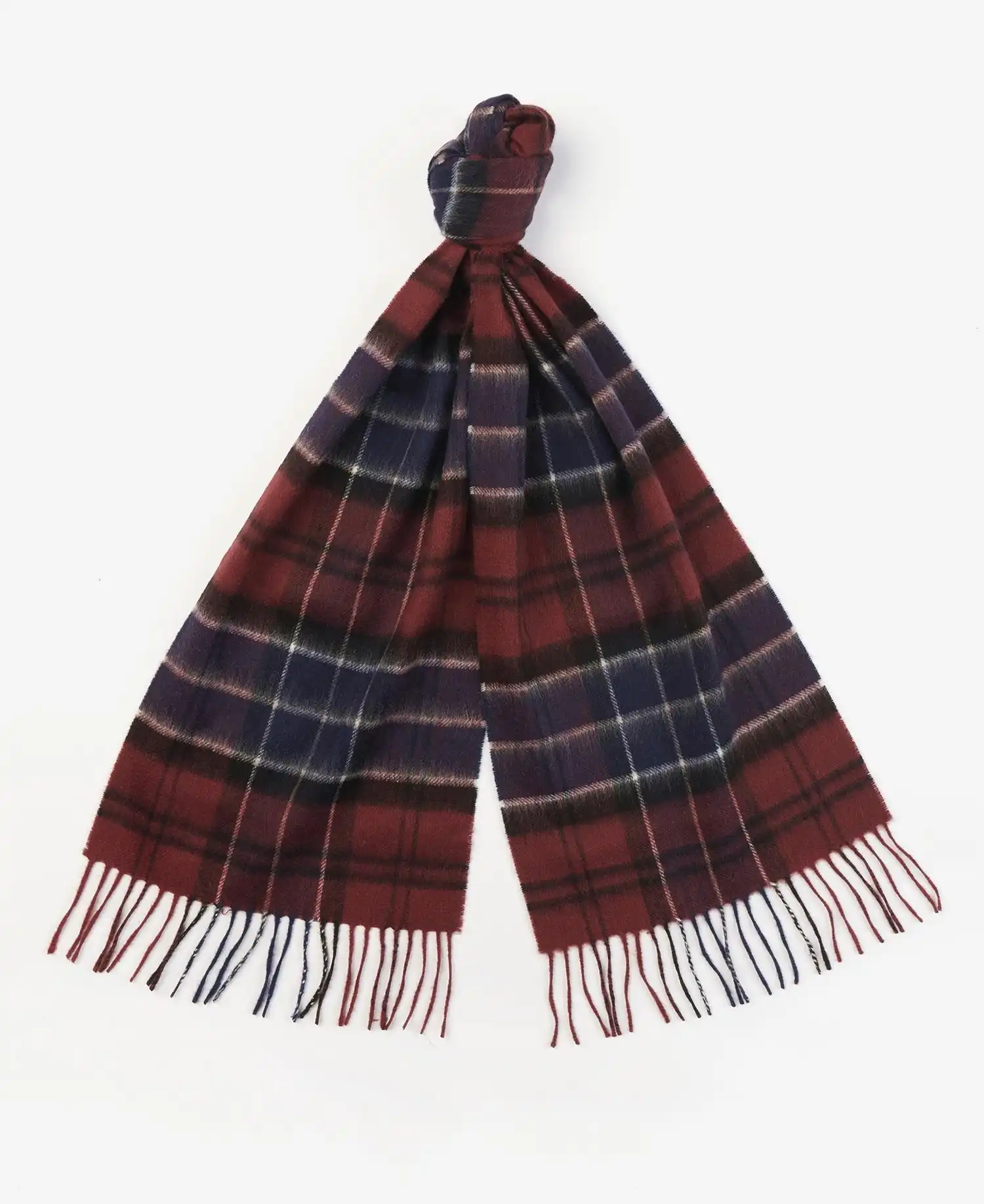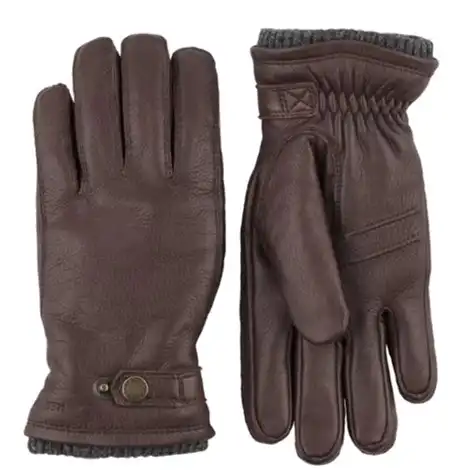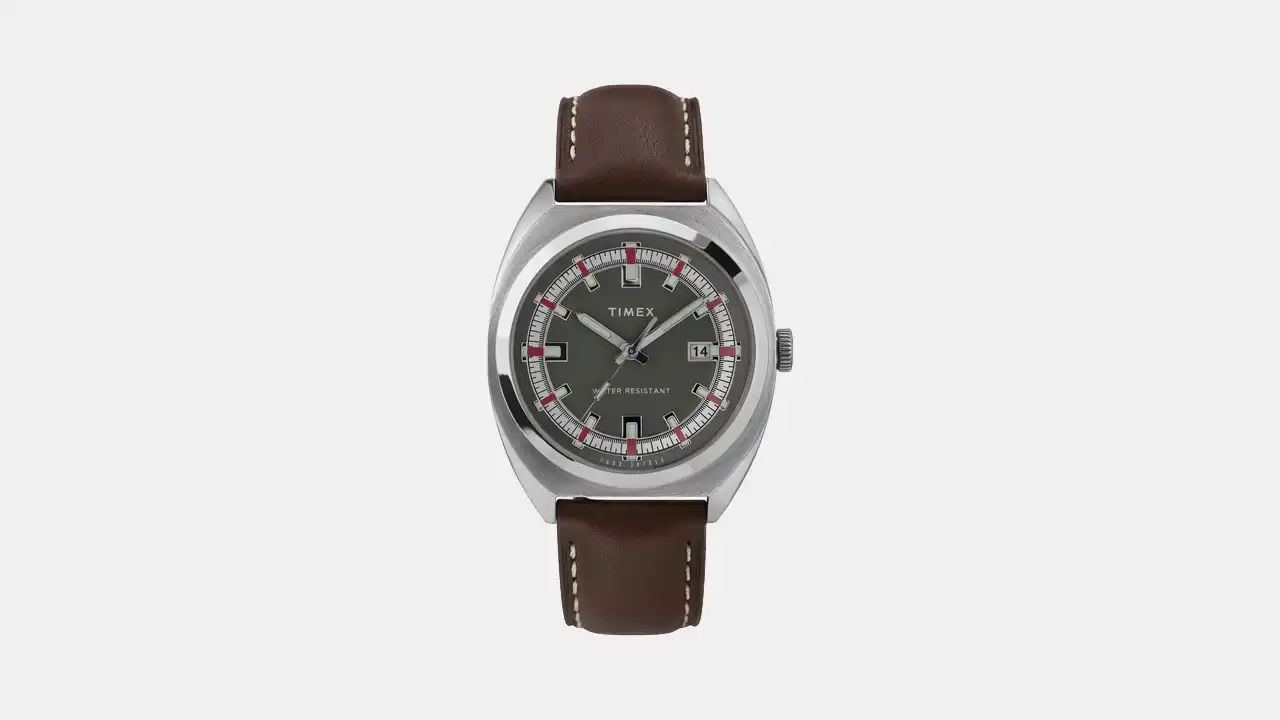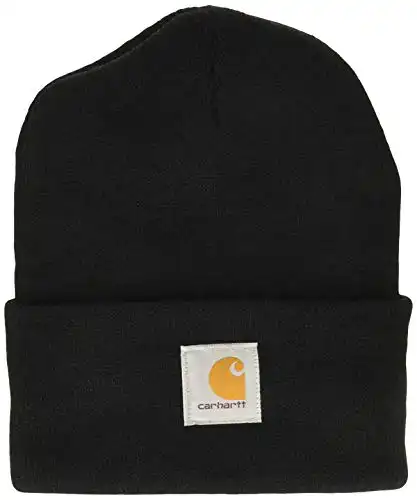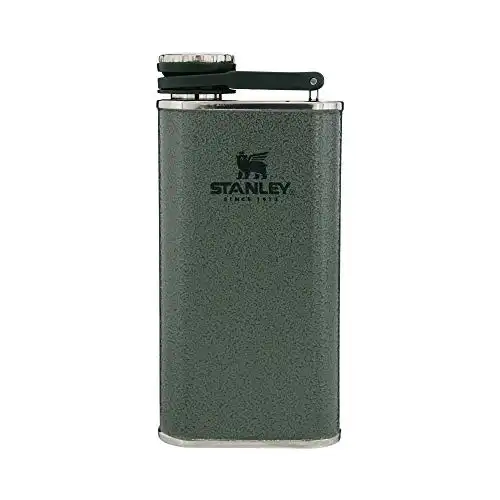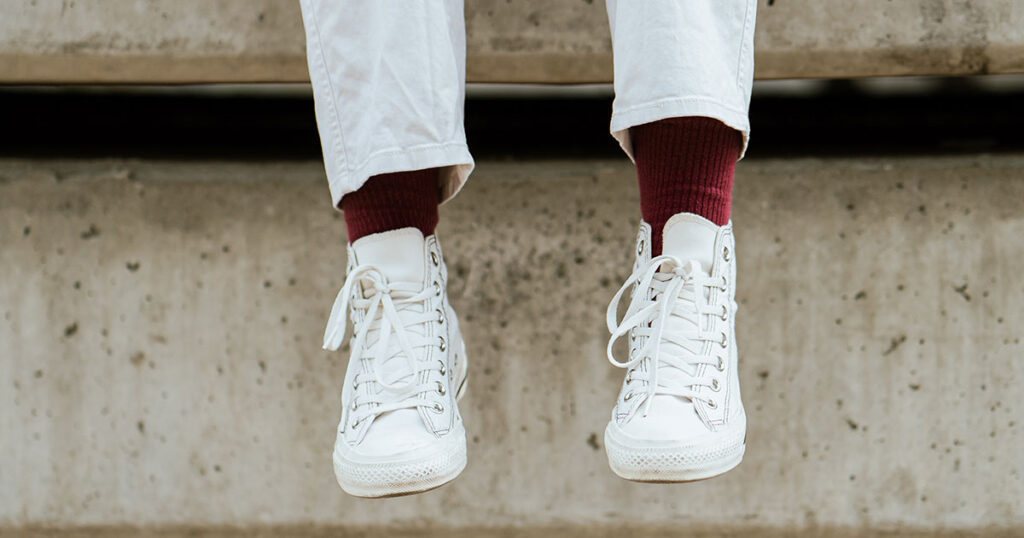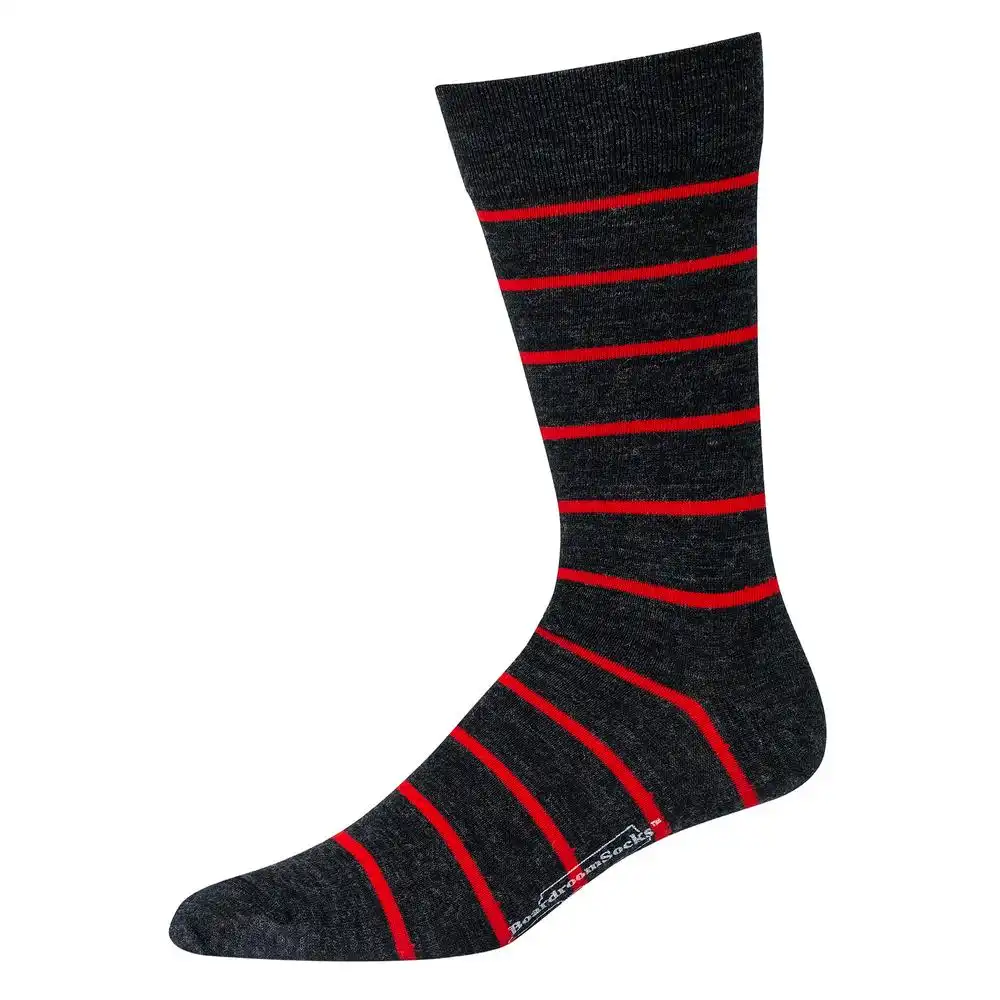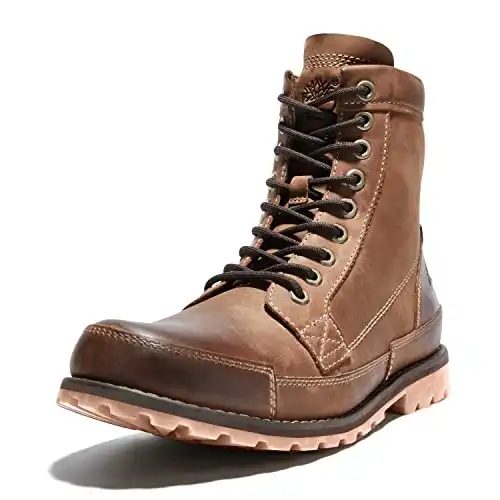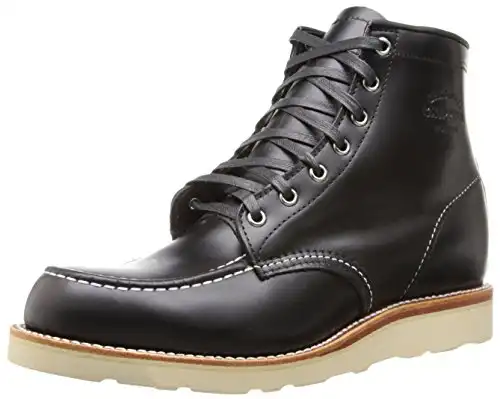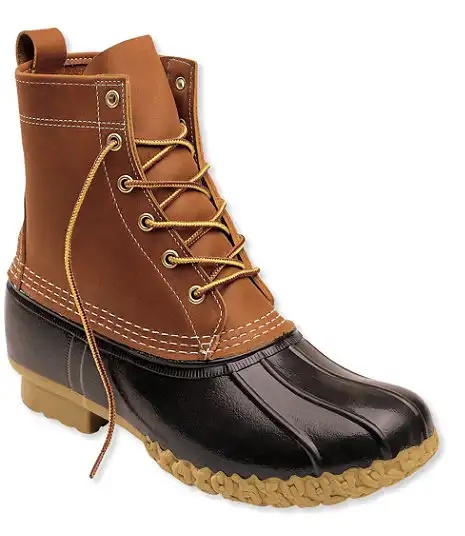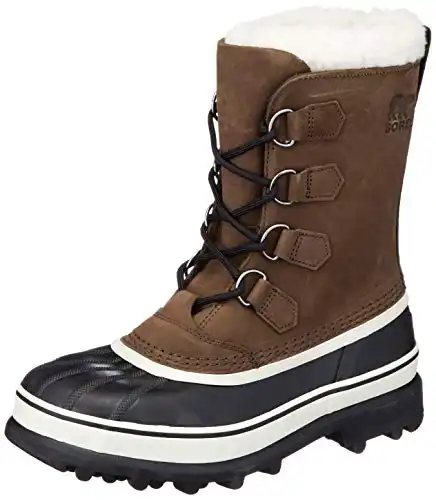In this article, we’re covering everything you need to know about men’s winter fashion in the 2020s (and beyond!), specifically for the effortless gent (i.e., you). These are the essentials—NOT trends—you need to know about dressing well and having smart, sharp style in cold weather.
Fellas, cold weather season is here! I want to help you dress sharp this fall and winter, so I put together this style guide so you can totally up your winter fashion game this season.
This is a HUGE article, so I broke it up into sections. Just use the Table of Contents below if you want to jump around. Enjoy!
The Best Winter Colors, Fabrics, and Fit
Here’s the TL;DR for your winter clothing’s colors, fabrics, and general fit:
- When it comes to colors for clothing, you’re going for darker, richer tones.
- And with fabrics, a heavier weight and more texture.
- As far as fit, clothes should start slim and gradually become more roomy and relaxed.
See the sections below for more detail.
The Best Colors for Men’s Clothing in Fall and Winter (Outfit Color Coordination)
When you think of fall, winter, and cold weather, what images pop up in your head? For me, it’s stuff like this:
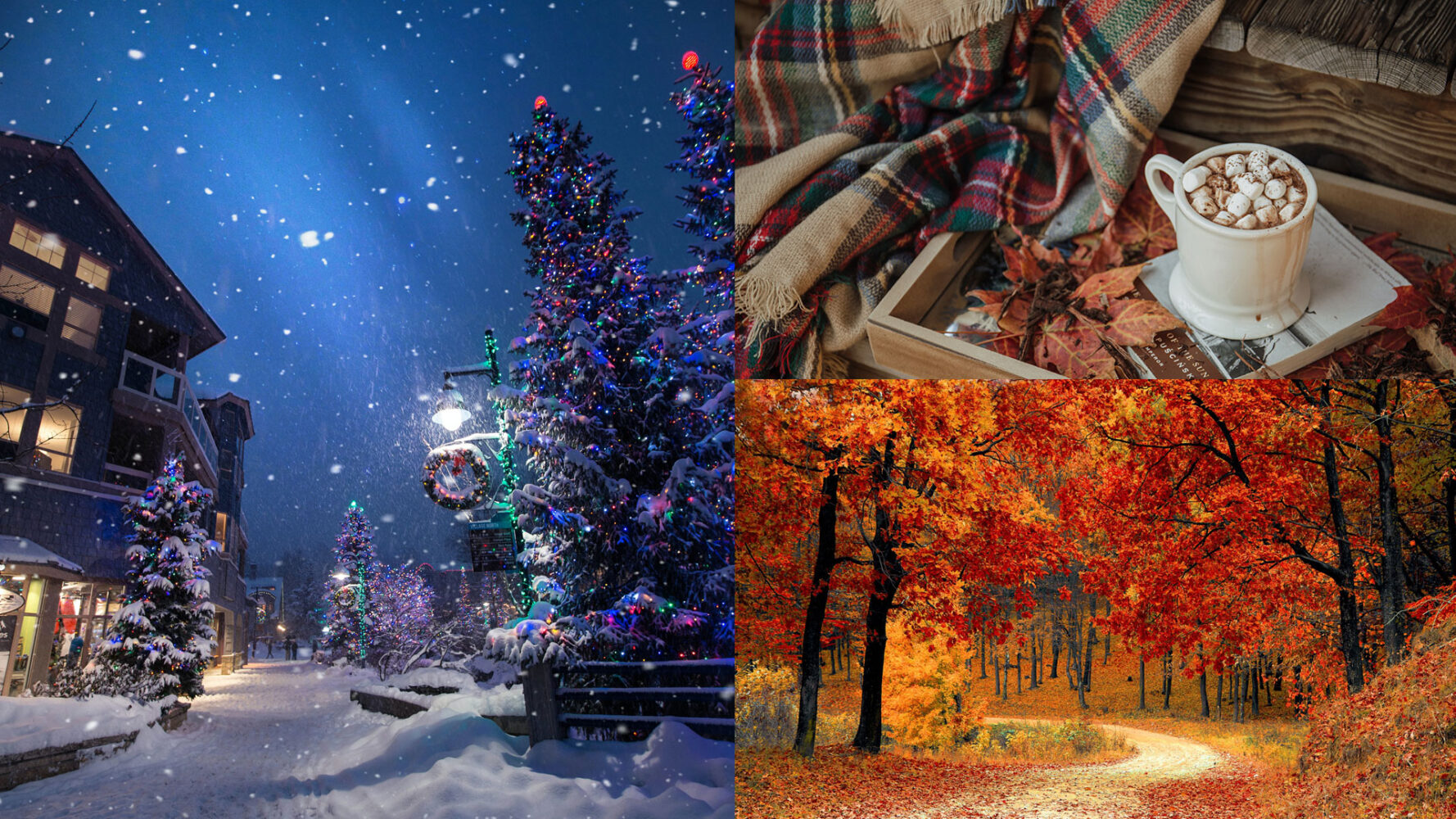
And when you think of spring, summer, and hot weather, what images do you think of?
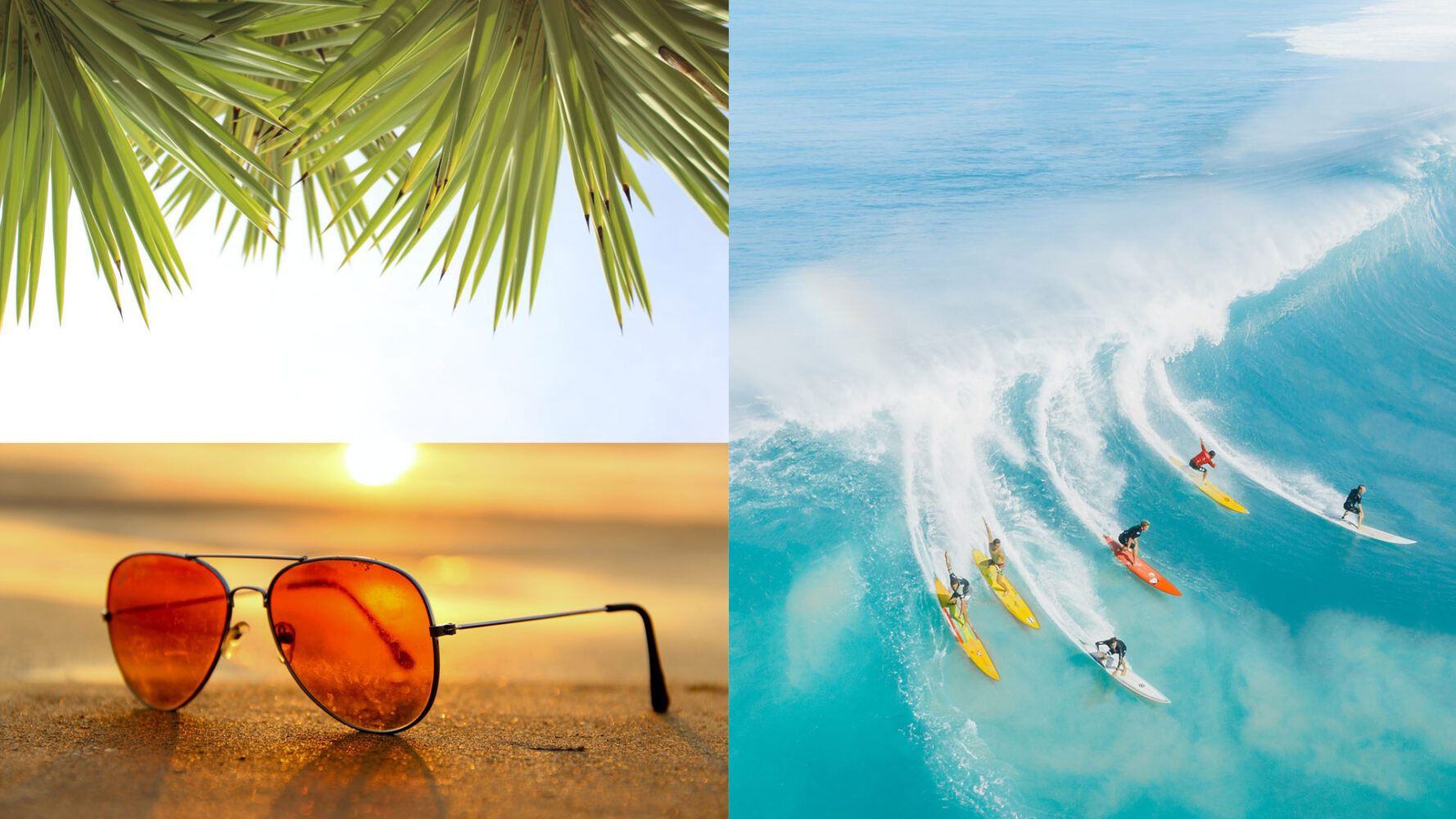
When it comes to color, think of your wardrobe the same way.
For colder weather and the fall and winter seasons, take advantage of darker, richer, and deeper colors: navy, charcoal, camel, eggplant purple, forest green, burgundy, etc.
My winter wardrobe consists of much darker colors such as these. Often, I keep it simple with black, navy, grey, and brown. My staples, like chambray
And for spring and summer, we go the opposite route:
- lighter colors and pastels (white, light grey, light blue, lavender, light pink, cream / tan)
- bright and vibrant hues (neon green, orange, magenta, electric blue)
- fun patterns and prints
I even wear my dark denim less, and instead, swap them with my lightweight, stretch, light-wash denim. The only dark colors I have during spring and summer are my olive and navy linen
See our article on dressing for warm weather if it’s currently summer where you live.
The Best Fabrics for Cold Weather Clothing
When it comes to men’s winter fashion and style, the fabrics you wear will be heavier and thicker, warmer and more insular. This keeps the body heat in when you’re outside braving the colder temperatures.
For
Sporting an all-season wool suit? You’ll have to compensate for lack of warmth by layering up with long johns and thermals. Or by adding mid-layers such as a sweater or thin quilted vest underneath your suit jacket.
For casual clothing, you’ll probably be wearing:
- Denim
- Heavier-weight chinos
- Twill and flannel
shirts - Thicker wool, cotton, and cashmere
- Heavier canvas, down-filled, or wool outerwear
Winter fashion for men consists of plenty of heavier cottons, wools, thicker knits, more substantial woven
Contrast that with my spring and summer clothing, which is all lightweight everything, from my denim and chinos, to the linen
Looking for layering inspiration?
Check out this Pinterest board I put together with plenty of winter layering ideas.
How Should Men’s Winter Clothing Fit?
In short, very similarly to how your clothes should fit every other season: Relatively slim and form fitting, but not overly tight, so you have enough room to move around.
There’s a caveat: in winter, we tend to layer our clothing—think thermal underwear, button-up
In general, our outermost layers tend to be a more relaxed fit in order to accommodate the layers underneath. You’d never want a pea coat so slim that you can’t wear anything more than a button-up
We’ll get into the details next.
How To Wear Layers In Winter: A Guide To Doing It Right
Men’s winter fashion requires you to work with thicker, heavier fabrics, and doing a bit more layering.
Remember these basic guidelines. Layers should go:
- thin → thick
- slim → loose / relaxed
- lightweight → heavy
So if you combine those three guidelines, the layers closest to your skin should be thinnest, slim fit, and lightweight.
As you build your outfit, each layer progressively gets thicker and heavier, and has a more relaxed fit to accommodate all the layers underneath.
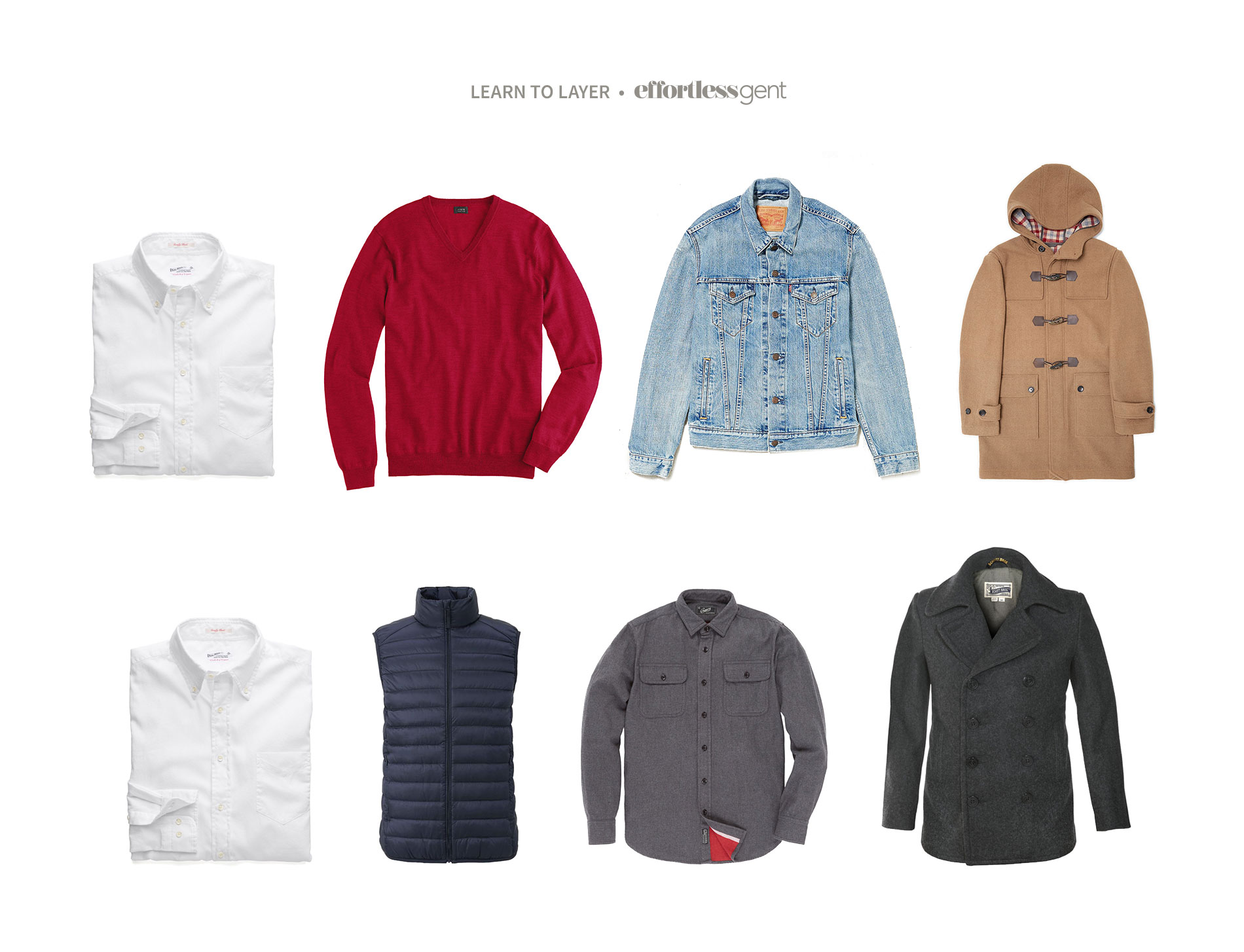
two benefits to layering
Well, there are a few benefits, but here are the main two:
- It’s easier to regulate your body temperature. You get too warm, you take off a few layers. Get chilly and you put a few back on. Contrast that with a T-shirt and a thick puff coat. That non-layered combo doesn’t leave you with many options, does it?
- Your outfits look waaaay more interesting and extra layers give you a bit more leeway to experiment with your style.
This also helps with overall comfort and fit. If you have thick, loose, and / or bulky pieces underneath layers that are slimmer, thinner, or more lightweight… that would be really uncomfortable.
Check out our article on effective layering or these layering tips for real life examples.
Smart Casual Clothes: A Man’s Winter Style Guide
First, let’s cover a few basics about your fall and winter smart casual clothing. We’ve already gone over colors, fabrics, and fit. You might be wondering, “How much clothing should I have?”
The ideal number of clothes in your lean, minimalist fall/winter wardrobe will depend on your situation, lifestyle, and surroundings. If you’re still in the process of building your lean, minimalist wardrobe, the following suggestions will help.
If you have a lean wardrobe, putting together outfits is simple. And transitioning them from spring/summer to fall/winter is just as easy.
This is what I consider to be the perfect Lean Wardrobe outfit. While I’m more casual nowadays, I still consider this my base uniform, and would wear this 99% of the time if I worked in a “business casual” environment.
Here’s a bit of social media proof 😉
Each piece of the outfit separately can be swapped out with similar items that are more appropriate for the season or the venue.
With each suggestion below, imagine swapping it out with the default option above. And for items that don’t exist in the default option (mid-layers), simply add it in (e.g.,
In terms of weather-appropriateness (thicker, warmer layers), here’s what I would suggest:
Fall and Winter Shirts
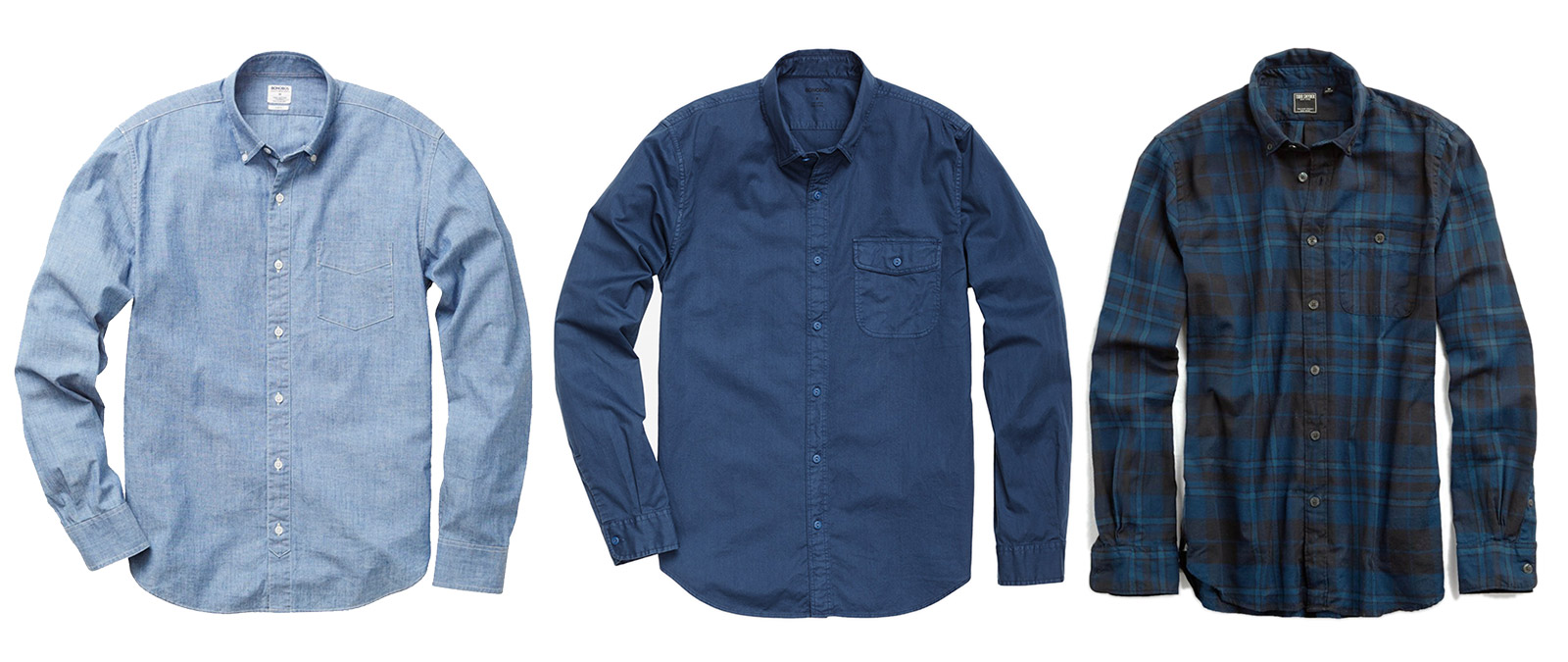
Chambray isn’t exactly a fall- and winter-specific
As far as OCBDs, brands make lighter-weight versions for spring and summer. But your standard Oxford cloth is pretty substantial and a great option for fall and winter.
Soft and lightweight, perfect for cold weather temperatures. Many colors and styles available.
I’d also consider flannel and twill
Fall and Winter Mid-Layers
Mid-layers are the secret sauce of perfectly-layered wardrobes. Instead of wearing one heavy coat, wear a mid-layer and a jacket or light coat (or put on your heavy coat if it’s really cold out).
Having two warm layers makes it easier to regulate body temperature, vs. just a
Great budget quilted vest that's perfect for layering in colder temperatures.
If it gets too warm and you only have a coat on, you’re out of luck. Your only option is to take off the coat. That’s all you have. With no mid-layer, you’ll get cold four minutes later and have to put the coat back on. And then take it off when you get warm again… it’s a vicious cycle.
Aesthetically, you can put together a more interesting look with multiple layers. So really, sweaters and vests not only regulate body temps better, they also add extra oomph to your outfit.
It’s important to make sure you have 2-3 versatile middle layers, such as vests and quarter zip sweaters (which are pretty much interchangeable). To maximize versatility, stick with neutral colors like grey, navy, black, tan or brown.
Most guys have a plenty of inner layers (like button up
Fall and Winter Pants
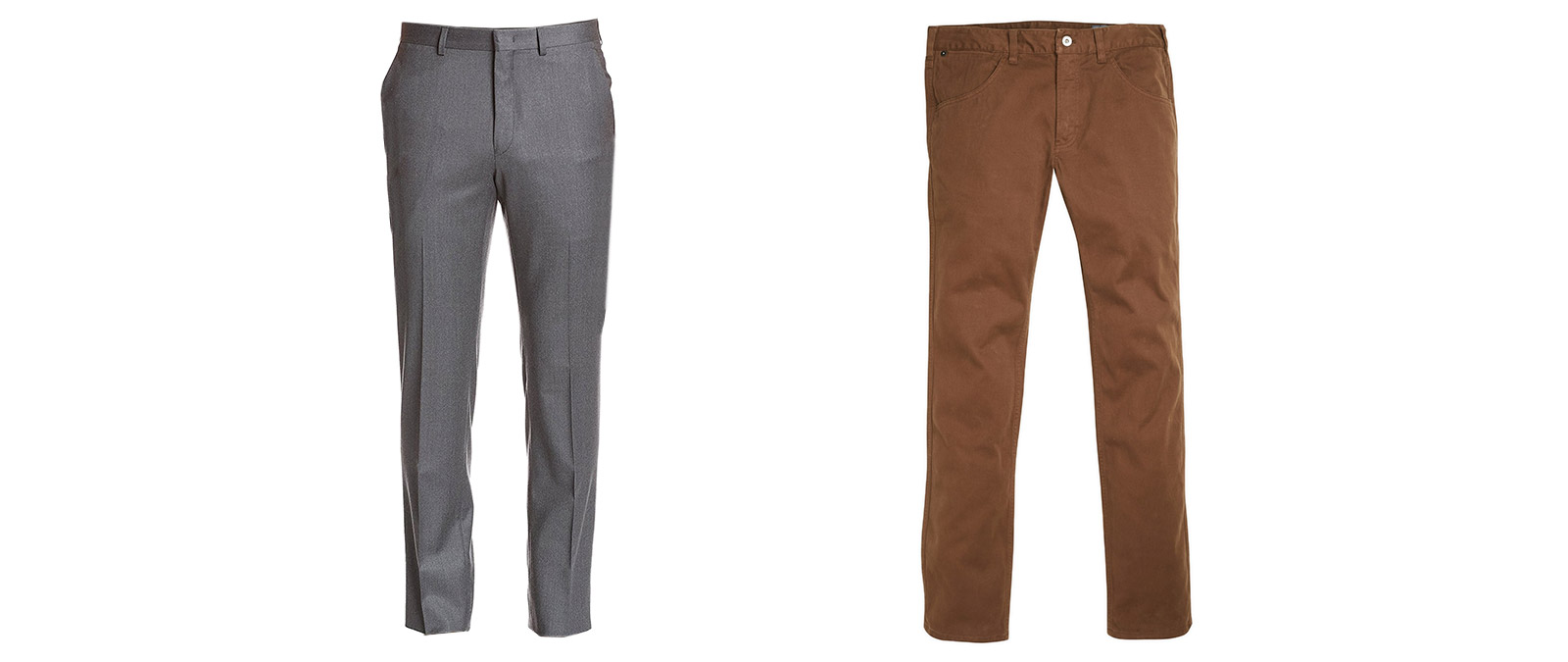
Denim is a great option for fall and winter. If you get the right pair of denim, you’ll be able to wear it casually (T-shirt, sport coat, and loafers, just like my default Lean Wardrobe outfit at the beginning of this section).
Your search for the perfect chinos ends here. Bonobos' chinos offer superior comfort, dozens of colors, and quality that lasts.
You can also choose heavier-weight chinos. And for a dressier option that can still be worn casually, you can’t go wrong with flannel trousers.
Fall and Winter Shoes

I typically wear brogues during the colder months, as I prefer a lighter-weight unlined leather or suede loafer when it’s hot out.
For a dressed-down shoe that you can wear with all the options we mention above (yep, even those tailored trousers! High / Low for the win), throw on work boots or a pair of Chelsea boots.
For a smart, sharp option, go with the Allen Edmonds Strand, an awesome cap toe with beautiful brogue detailing. You’ll see the dark brown model above, but my favorite is the AE Strand in Walnut.
I also love the Beckett Simonon Kent wingtips as an alternative. Great shoes made when you order, all at a wallet-friendly price point.
Fall and Winter Outerwear
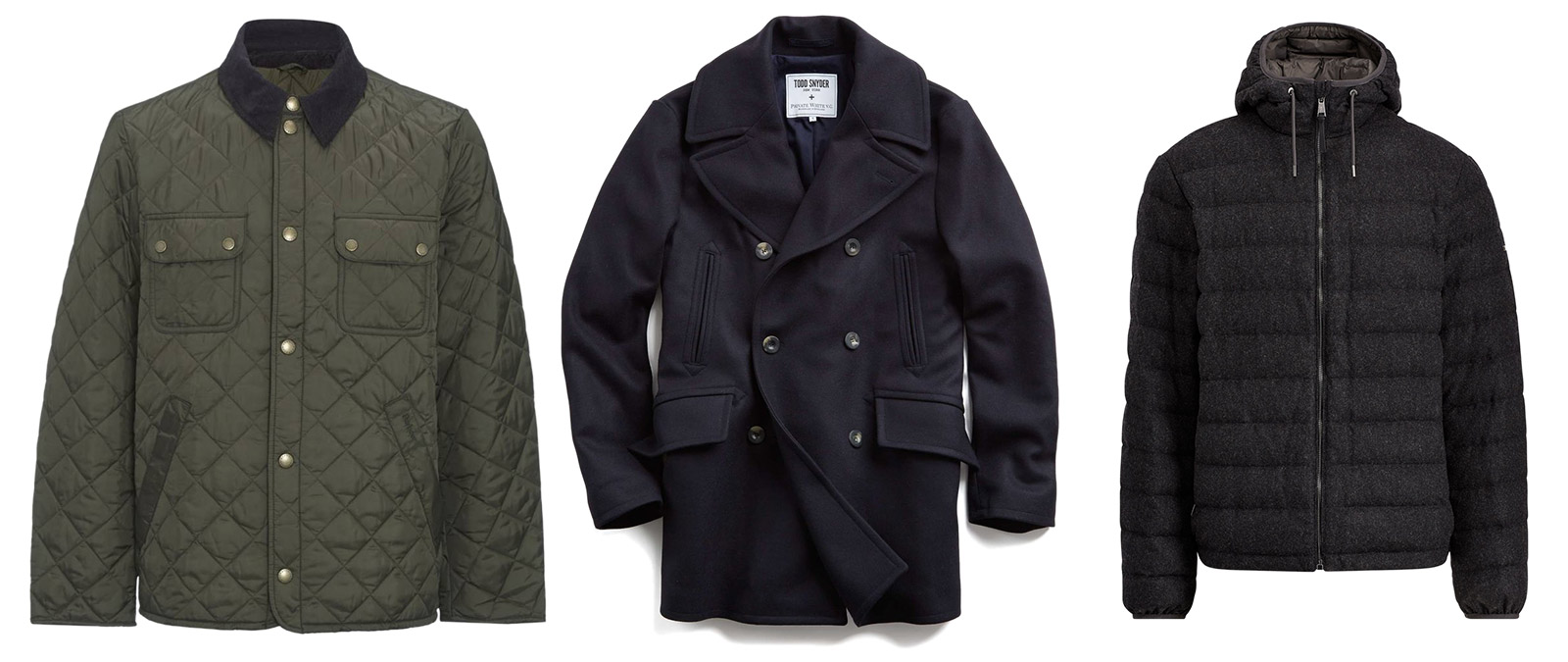
Outerwear, like the ones you see in the image above, are an obvious necessity for fall and winter.
In terms of how many outerwear pieces or what kind of outerwear pieces you need, use your best judgment.
If you live in a really cold climate, you may need multiple outerwear pieces with serious insulation. If you live in a more temperate area, you could probably get away with just a pea coat or a quilted jacket (plus layers, of course).
I have a number of outerwear pieces and I find a peacoat, overcoat, or down jacket can get me through a typical New York City winter. Your mileage may vary, depending on how hot or cold you get.
Sport Coats as Outerwear? Maybe
A quick aside: Let’s chat about sport coats as well, because depending on where you live, a heavier wool sport coat can serve as your outerwear, such as these ones from SuitSupply.
Here’s a little tip when it comes to sport coats: Look at them as jackets, instead of “half a suit”. That helps make them less intimidating and easier to incorporate into more outfits.
They’ll make you look sharper even if the outfit has plenty of casual elements (like denim or white leather sneakers).
For extra warmth, opt for sport coats in a winter-weight wool or tweed. And for a smart, sharp, casual look, you can layer up with a V-neck sweater or a down vest.
Smart Casual Fall and Winter Style Upgrades: Try These Stylish Twists
If you want to add a teeny bit of excitement to an otherwise standard outfit—of course, there’s nothing wrong with a standard, foundational look— here are a few ideas and tips to try when getting dressed during the fall and winter months.
Ditch Gingham For a Windowpane or Graph Check
You’ve seen windowpane and graph checks before, but maybe you skipped them and went for a
Give one of these checks a try for fall / winter! It’s a great way to switch it up from your typical
For the office, a light graph check dress
And if you want something more casual and bold, go for a windowpane (basically a larger grid) with more color contrast, or a version with a dark ground color (like navy) under a lighter-colored windowpane pattern.
Wear Chinos In Deep, Vibrant, Rich Fall / Winter Tones
If you love brightly colored chinos in the summer, you can do the same thing for the winter. Just switch to darker shades and earthier tones like burgundy, slate grey, chocolate brown, and hunter green.
Your search for the perfect chinos ends here. Bonobos' chinos offer superior comfort, dozens of colors, and quality that lasts.
The darker, richer, more vibrant colors work perfectly for cold weather style. Remember, you want to mimic the colors of the season (scroll up for a refresher on spring / summer tones vs. fall / winter tones).
Wool Flannel Trousers: The Versatile, “High / Low Style” Option
The wool flannel trouser is a great piece for fall and winter. The warm cloth keeps you cozy, but the tailored trouser style keeps you looking sharp.
It’s an easy stand-in for chinos, and if you feel too “dressed up” in them, use the high / low technique to balance it out—think a crewneck sweatshirt up top, or a T-shirt and denim jacket.
Several fits and colors available.
It might not be the standout piece in your outfit, but it will definitely be the workhorse. The look and texture of these trousers go well with anything in your cold weather wardrobe. And they’re easy to dress both up and down. Win-win!
Another option I love is donegal wool trousers (and sport coats, of course). The ground colors are deep, vibrant, seasonally-appropriate shades. The cloth (donegal tweed) has interesting texture and different colored yarns interwoven in the fabric. From afar, it’s one color… but up close, it’s unique and colorful and so cool.
Wear A Denim Jacket As a Mid-Layer
On transitional days or when you need extra warmth over a lightweight sweater, a denim jacket is a classic look. You can keep it casual or even rock a tie with your denim if you style it right, like in these five examples.
The original jean jacket since 1967. Can buy true to size for the perfect fit, or size up if you want to wear a thicker layer undreneath. 100% Cotton, button closure, hits at hip.
Sportswear That’s Sharp and Tailored, Not Sloppy
Athleisure is here to stay, but that doesn’t mean casual and comfy can’t look good.
The joggers and sweatshirts available nowadays are much, much sharper and cooler looking than your typical Fruit Of The Loom sweatsuit set you find at Wal-Mart or low-end department stores.
Check out how brands like John Elliott and Nike are doing it. Mid-tier options like Flint and Tinder, and budget options from Asos, Uniqlo, even Spier & Mackay also exist.
A basic style upgrade? Trading in your ill-fitting, ratty college sweatshirt for a simple grey crewneck sweatshirt that you can dress up or down with ease.
Todd Snyder makes effortless everyday luxuries for the modern gentleman
Shawl Collar Cardigans: Update your Standard Crewneck Sweater
V-neck and crewneck sweaters are great for layering. But if you want a piece with a rugged edge, look no further than the shawl collar cardigan.
Versatility is its greatest asset. It can evoke a classic outdoorsman style, or it can be a bit dressier—you can’t go wrong. Use these tips to choose the right one for you.
Invest in a Great Leather Jacket
Outside of the suit, a leather jacket is one of the biggest investments in your wardrobe. Just like a suit, there’s something transformative about putting on a properly fitted leather jacket.
There’s no other way to describe it: You feel like a badass. Check out our guide to choosing the right leather jacket.
If you’re looking for a biker style, I love the Allsaints Conroy biker jacket. And they have a few bomber style leather jackets as well.
Fall, or as I like to call it, “light jacket season”, is my favorite time of year. You’re still dressing in a way that’s about style, not necessarily utility. You want to actually look good, not just feel warm.
I like to play a game where I see how long I can wear my summer clothes, just by layering in cooler weather pieces. If the temperatures stay as warm as they’ve been, this year I’m shooting for November.
Fall/Winter Suits and Dress Clothes
Are men’s
YES! Absolutely. While
Some
If you dress in a casual or smart casual style most days, then you can get away with just one or two fall / winter
How to Wear a Suit and Tie in Cold Weather
A few years back, I attended a wedding in Mexico. I was one of the groomsmen, and we were all asked to wear mid-grey
I bought a Ludlow Traveler suit from J.Crew (Update: If I had to buy today, I would suggest the SuitSupply Traveller) because I knew I had to:
- Get that suit all the way to Mexico, and I didn’t want to worry about wrinkling, either in my suitcase or on my body, and
- The Ludlow Traveler is unlined and lightweight, perfect for the hot Mexico sun (same goes for SuitSupply’s version).
One of the groomsmen had a mid-grey suit made from a winter-weight wool (poor guy). This was, legit, something you’d wear to work in the wintertime.
Not only was I DYING in my (lightweight, unlined, unstructured, breathable) suit, but I had to stand still as much as possible so I didn’t sweat profusely. I felt so bad for this guy; I can’t imagine how hot he must’ve been.
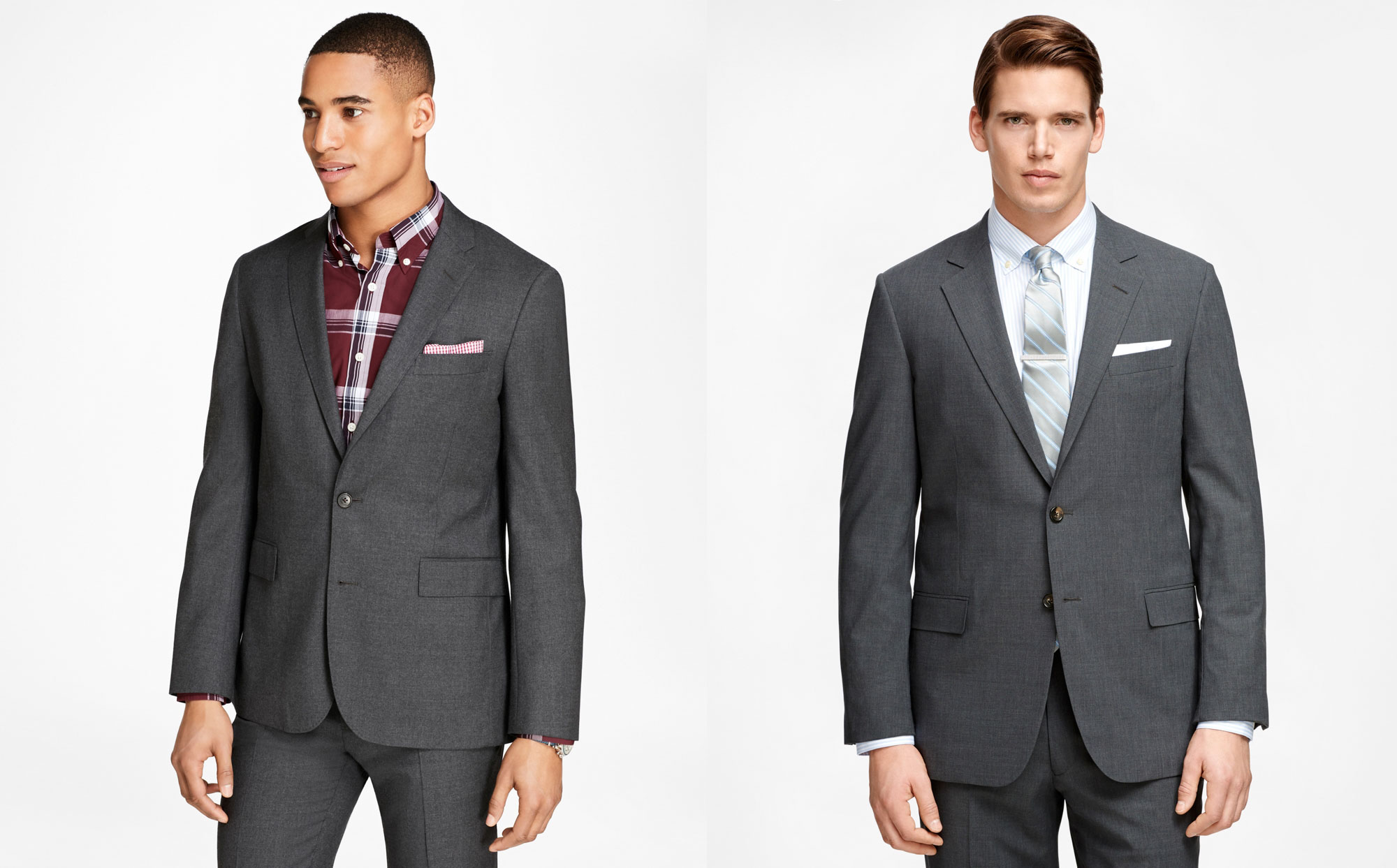
If you don’t wear
Something that’s appropriate to wear in winter is definitely not one that can be worn to a summer wedding in Mexico.
Just like you have casual
“What kind of fabric should my fall / winter suits be made from?”
Wool flannel is among the comfiest and warmest
Remember that 100% wool cloth comes in different weights, with 12 oz being the minimum you want for a winter suit. Any lighter and you’re in “all-season” weight. That can work, but depending on how cold it gets where you live, you may need to layer up.
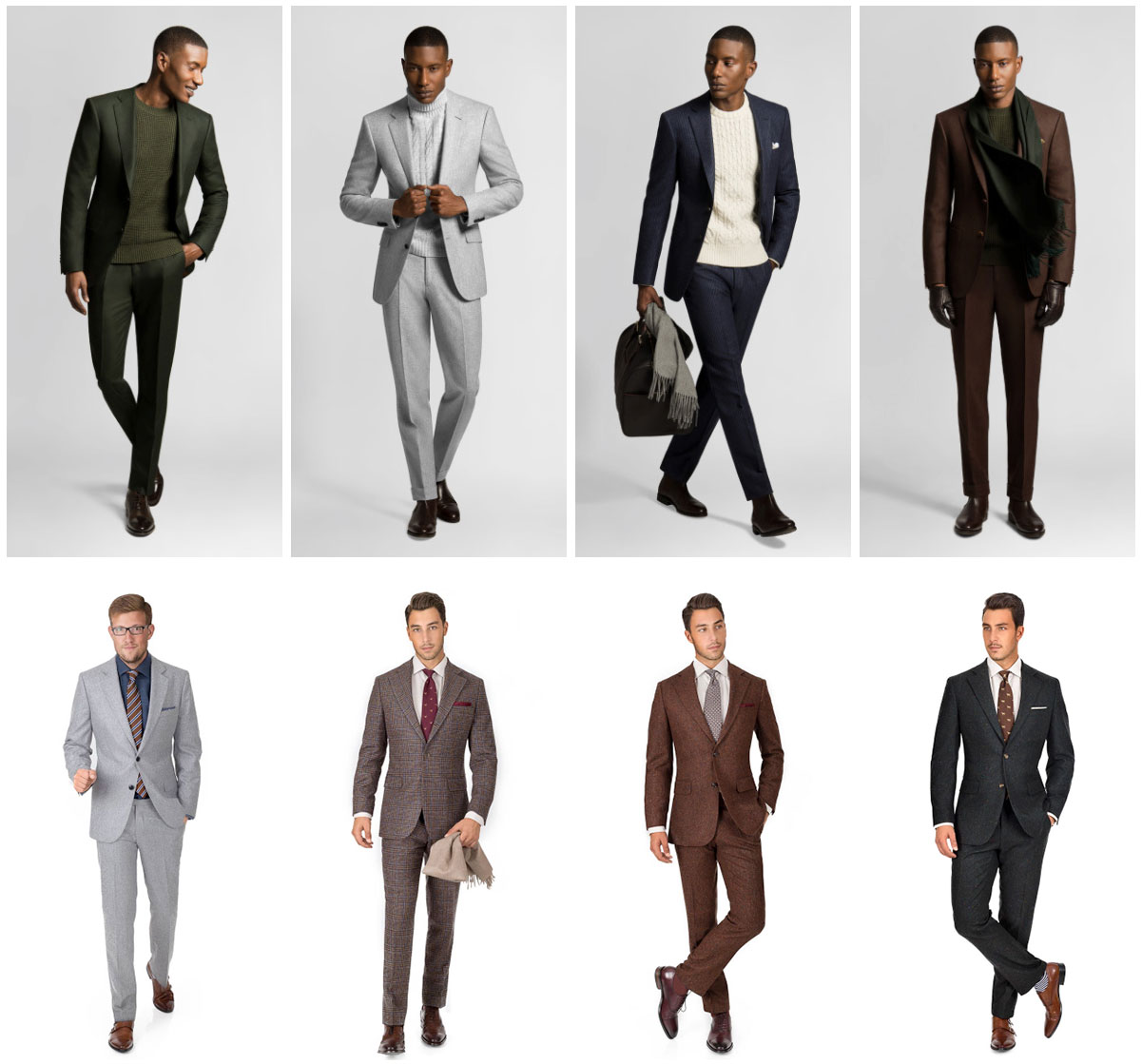
If you’re buying
Once you start going custom, that’s when you can select the specific cloth and weight.
“Are some colors better than others for fall and winter suits ?”
For a Lean Wardrobe, regardless of season, you’ll want a standard navy and/or mid-grey suit. Other colors that work for fall and winter weather specifically? Brown, rust, forest green, even an ash (light) grey.
If you wear
But if you don’t wear
A bit of texture, on the other hand, can’t hurt.
“What are the best shirts , ties, and shoes for winter?”
Everything in your outfit should match the common theme… in this case, weather.
Not only should your suit be cold-weather appropriate, so should your
You won’t be rocking unlined suede loafers in the snow with your heavy wool coat either.
Every element in your outfit needs to follow the theme of “winter fashion” for it to make the most sense, not only from a look and feel perspective, but also from a practicality standpoint.
Need some winter outfit inspiration?
Check out my Pinterest board full of men’s outfit inspiration for the cold fall and winter months:
For
For ties: I looove The Tie Bar’s wool ties. They produce a substantial knot and look great with heavier-weight suit jackets and sport coats. Oh, and they’re crazy affordable.
For a more upscale brand with gorgeous ties, check out Drake’s.
Grenadine knit ties (navy and burgundy are perfect Lean Wardrobe staples) also work well in the winter… actually, year-round. And you can’t go wrong with a standard silk tie. Just make sure the color palette makes sense with the rest of your outfit.
For shoes: Beckett Simonon Kent wingtips in brown. Make sure to wear Swims overshoes to protect them from water and salt.
A super simple secret to creating a sharp, layered outfit for fall is choosing pieces with different textures. Tweeds, chunky knit sweaters, flannels, wool overcoats, denim and chambray
How Fall and Winter Clothes Should Fit
As I mentioned in my summer clothes article, I prefer my warm-weather outfits to be a bit looser and more breathable. I don’t like clothing that’s tight and restrictive, especially when it’s hot and humid.
It’s the opposite for dressing in winter, especially as you layer. You want to make sure the layers closest to your skin are the most fitted. That avoids any extra bulk or wrinkling as you put on more layers, which is super annoying and uncomfortable.
Here’s an example: sweaters. Bulky or chunky wool / cotton sweaters can be difficult to layer, unless, of course, it’s your topmost layer.
If you want to wear a sweater under a sport coat, then it should be a thinner (finer gauge) wool or cashmere version with higher armholes to get the perfect fit. It looks better, will be more comfortable as you wear it, and is much easier to layer.
Blazers give some guys trouble too. Summer-weight sport coats can be relatively slimmer, but you need a bit more space in the winter so you can layer a sweater under it. Get the details in our guide to finding the perfect fit for your blazers, regardless of the season.
You may notice some parkas and topcoats are slightly oversized. You go with your normal size from a brand you know well, but it’s still too big. What gives?
It’s assumed you’ll be layering underneath, and the coat is designed to accommodate those extra layers. If you don’t plan on layering, you may be able to size down, but if it were me, I’d buy my true size, in case I want to layer. Choose your size accordingly.
Smart Casual Accessories
You can elevate your smart casual look with a few carefully chosen accessories. Don’t go crazy here, but do make your outfit stand out with a few stylish touches.
Scarf
A wool or cashmere scarf is the perfect cold weather accessory. You can go with a fall/winter solid, neutral color (like grey) and your scarf will work with anything in your closet. Or choose a standout statement scarf in a colorful plaid.
Non-Boring Leather Gloves
Everyone has a pair of leather gloves with the three stitch design across the top. Upgrade to a pair that’s a little different. Think quilted cross stitching on the exterior, a racing inspired snap clasp at the wrist, or a combination leather and knit glove.
Great options from brands like Hestra, Patagonia, Elmer, and more.
Watch
Even if you’re used to checking the time on your phone, your timepiece is a fun way to show off personal style. A Timex
Check out the unique collaboration pieces with Timex and Todd Snyder.
A Beanie
Gotta keep your noggin toasty, right? A beanie, or skullcap, or watch cap, or simply “knit hat” is a must if you want to stay warm in temps below 40°F. I prefer the plushy knits that have a good bouncy loft, vs the styles that are very close and tight on your head… but to each his own.
Looking for an affordable and utilitarian beanie for everyday wear? Carhartt is the way to go.
Their Knit Cuffed Beanie is available in a huge range of colors, and the rib knit acrylic fabric will stay snug on your head. It’s our go-to pick for a hard-wearing beanie under $20.
Winter Beard
You don’t have to go full on lumberjack. But a bit of well groomed facial hair always fits in during the colder months. To stay professional and well trimmed, keep your neck shaved smooth and your beard lines well defined. The more stubble creep you allow, the less polished it looks.
Looking for great beard care products? Look no further than our friends at Beardbrand. I don’t have a beard, but I use their hair care and grooming products and they’re my fave.
Tired of the mess you see in and around the sink after trimming your beard? This Philips Norelco trimmer comes equipped with a hair-capturing vacuum. At first it sounds like a gimmick, but after you use it a few times you’ll realize it cuts down on the mess by about 90%.
The ultimate tool to manage your beard, stubble, and body hair. The Beardscape makes an excellent hair trimmer and is perfect for any of your "manscaping" needs.
A Flask!
Taking pulls from a flask in the dead of summer means you might have a bit of a problem. But using a flask to carry and consume dark rum, whiskey, or bourbon after the leaves have started to fall is just too enjoyable to pass up.
Use it to spike coffee or hot chocolate, or take it for a walk with you while you listen to a Saturday afternoon football game. Just be responsible, inconspicuous, and aware of your city’s public drinking laws.
I think a natural tendency for a lot of guys is to grab their puffy coat when it’s cold outside and call it a day. They’re missing out on an opportunity to create a more interesting look with layers, especially when you contrast things like casual and formal pieces.
A great example recently when it was cold: I threw a double breasted blazer over my denim jacket and got a ton of compliments. You can do something similar—wearing a leather jacket under a topcoat, or swapping in a flannel henley in place of a plain undershirt, unbuttoning your dress
What’s great about adding more layering to your fall style is that it lets you wear some of your spring/summer clothes that would normally be too thin when it gets cold out.
Fall / Winter Footwear: Choosing and Caring for Your Shoes
The wet, slushy, snowy season requires some thoughtful footwear choices. I still see guys walking around in the rain with jeans, Vans, and a hoodie… which confuses me. Is your goal to absorb as much moisture as possible?
It comes down to dressing appropriately for every occasion, and canvas shoes don’t hold up well in a storm.
Start with Socks
Go with merino wool socks for a thickness and warmth without the massive bulk of most heavy winter socks. They can replace your typical summer cotton socks and will winterize even your lightweight sneakers and loafers. Just don’t wear them with a suit… that still calls for a dressier sock.
From the yarns they use to their meticulous design, Boardroom Socks' commitment to quality traces all the way through the production process. Each pair of socks is hand-inspected before being shipped to your door.
Winter-Ready Shoes and Boots
Timberland Earthkeepers
I still love the classic wheat-colored boot from the days when I used to wear baggier jeans in the late 90s. If I could remember to pull them out of the closet at my parents’ house, I’d wear them.
But if I had to start from scratch with Timberland, I’d pick up this pair.
Chippewa Original 6″ Moc Toe
This pair from Chippewa has been in my regular rotation for at least the past five winter seasons. They’re really comfortable right out of the box (no break-in period), and I love the contrast of the black leather with off-white sole.
The Vibram sole is another plus; really lightweight and comfortable when walking. Plus it has just enough grip that I’m not slipping and sliding on NYC’s sidewalks.
This has been around for a number of years and it’s possible Chippewa has discontinued them. If so, the Diplomat from Thursday Boots is aesthetically similar, possibly even a bit more sleek.
L.L.Bean Original Bean Boots
These are my rainy day go-tos. I slip them on and go jump in puddles.
Our legendary Maine-made L.L.Bean Boot – designed by "L.L." himself in 1912 and keeping feet dry and comfortable ever since. Chances are, you’ll only ever need one pair.
One complaint: After all these years owning the same pair, the outsole can still be slippery from time to time. I’m not fully sure why.
Other than that, they’ve been dependable, keep my feet dry, and are a classic look that goes with a ton of rugged casual outfits.
Sorel Caribou Winter Boot
I have a few friends who swear by their Sorel winter boots.
I can see why: they’re waterproof with sealed seams, a full grain leather upper, removable felt inner boot, and non-slip rubber lug outsole. Your toes will definitely stay toasty and dry.
Personally, I never get that cold, and in my seven years here in New York, I haven’t experienced a prolonged enough winter to where these would be necessary.
But if you live in an area that experiences extreme cold, consider the Caribou boots from Sorel!
Beckett Simonon Kent Wingtips (For The Office)
You can rock these wingtips with a suit to work or with a rolled pant on the weekend to show off the heft of the sole.
Personally, a chunky brogue is my go-to versatile statement piece for fall and winter. This brown color can easily pair with your suit or be dressed down with jeans for a dapper happy hour look.
Make sure to choose your socks with caution. Patterns and colors are OK, but better to go with something understated over loud or “fun”.
So stylistically, these are fall / winter ready, but weather-wise, not so much. For the particularly rainy days, you may want a galosh or overshoe to protect the shoe’s leather.
How to Wear Boots with Every Outfit
I once got an email asking: “What’s the best way to wear (these boots) with my pants?”
Sure, it may seem a little daunting. You’re accustomed to shoes ending at the ankle.
To be honest, the only right way is whatever keeps you most dry.
Cuff up your denim (tips in this video), let them sit in between the boot’s tongue and back tab, or tuck them in if you have to. What matters most is arriving to your destination dry.
If your cuff naturally drapes over the boot, that’s fine. But if your pants get wet, start rolling them up! Don’t stress about the rules of winter fashion. Adapt, my friends. Adapt.
Protect Your Leather Shoes from Wet Weather
If you work in a formal setting that requires leather dress shoes, they’ll be okay, so long as you put cedar shoe trees in them at the end of the day. Let the leather rest. That’s very important.
Shoe trees. Rest for a day.
If you have to walk places in wet weather, you might want to invest in some overshoes which will further protect the shoes’ leather from the elements.
If it’s an extra snowy day, I’d suggest taking your shoes in your bag (video), and wearing snow boots on your commute. Change when you get to the office.
How To Deal With Salt Stains On Your Shoes
Peeps in snowy areas,
If you absolutely must wear your leather shoes when braving the elements (and you don’t already have a pair of overshoes, tsk tsk) treat them with care as soon as you reach your destination. A simple wipe-off should suffice.
Be thorough; any stray slush or salt water will stain your shoes. And getting that stain removed is a pain in the butt.
Conditioning and polishing the leather will help keep your shoes in tip-top shape and ready for whatever you throw at it. This is another reason (if you haven’t yet been motivated) to polish your shoes regularly.
Think of it like moisturizing your skin after showering. If you don’t moisturize, you dry out, your skin gets rough and cracked, etc. Your leather shoes work the same way.
Want a step-by-step solution for de-salting (that’s not a word) your shoes? Check out this concise guide from Valet Magazine.
How to Avoid Slipping on the Ice
If you’re more concerned about your own safety (walking around on wet, icy, or snowy ground with leather soles is not very fun or sexy), then you have some alternatives.
Take your leather-soled shoes to a cobbler and have a thin rubber layer added. Many places do this and it shouldn’t be tough to find a cobbler who knows what you’re asking for.
I’ve heard arguments for and against this method. Some say it’s perfectly fine and they haven’t experienced any problems. Others have said adding a rubber layer decreases the breathability of the leather and can trap in moisture which leads to rotting, curling of the rubber, and in general, ruins your shoes long term.
I’ll leave it up to you to do the research and decide whether or not this is a good solution for you.
Another option I keep suggesting throughout this article is to use Swims, which are overshoes (aka galoshes) that protect your shoes from the elements. They also increase your sole’s grip so you don’t slip and slide.
Some people think this is super nerdy. Others (like myself) think they look kinda cool. I don’t yet own a pair, but I’m inclined to pick some up and try them out. I encourage you to do the same; feel free to report back to me for extra bonus points.
For me, the best solution is a pair of dress shoes with a rubber or combination rubber/leather sole that you use on rainy and wet days. (More on that in our complete guide to brown leather shoes.)
The grippy rubber keeps you safe, minimizing slippage as you walk around. Aesthetically, you get the same look as your other dress shoes. The only difference is the less formal (but grippier) rubber sole.
How do YOU dress for fall and winter?
What it really boils down to is this: The perfect men’s winter fashion for you will depend on 1.) weather and 2.) formality.
Why?
- Weather: If you’re in Minnesota, your fall and winter wardrobe will look a bit different than someone’s in Miami or Manhattan.
- Formality: If you’re usually in business/formal environments, your everyday outfits will look different compared with that of a freelance web designer who works out of coffee shops.
Regardless, this is how it works: Start with a base outfit from your Lean Wardrobe (your uniform, what you typically wear most days) and Autumnize it (I just made up that word) by adding warmer, thicker, softer fabrics.
Where do YOU live? And what’s typical winter wear for you? Tell me below in the comments.
ARTICLE UPDATES
| 01/09/2023 | Added new text and sections, added images, updated text and links |
| 10/18/2021 | Updated Instagram examples, fixed broken links, fixed quote author images |
| 01/24/2021 | Fixed broken links |
| 09/24/2020 | Published |

